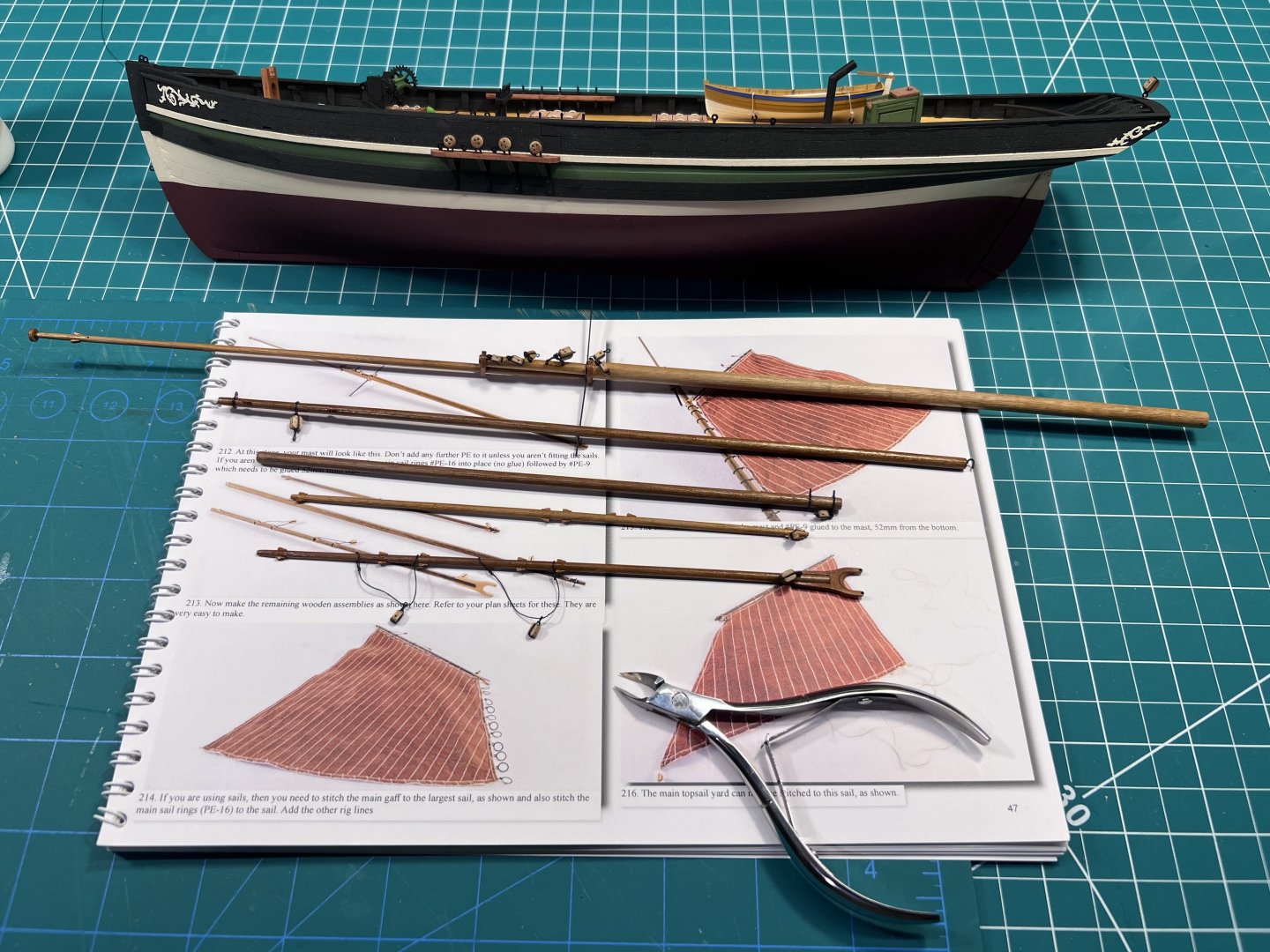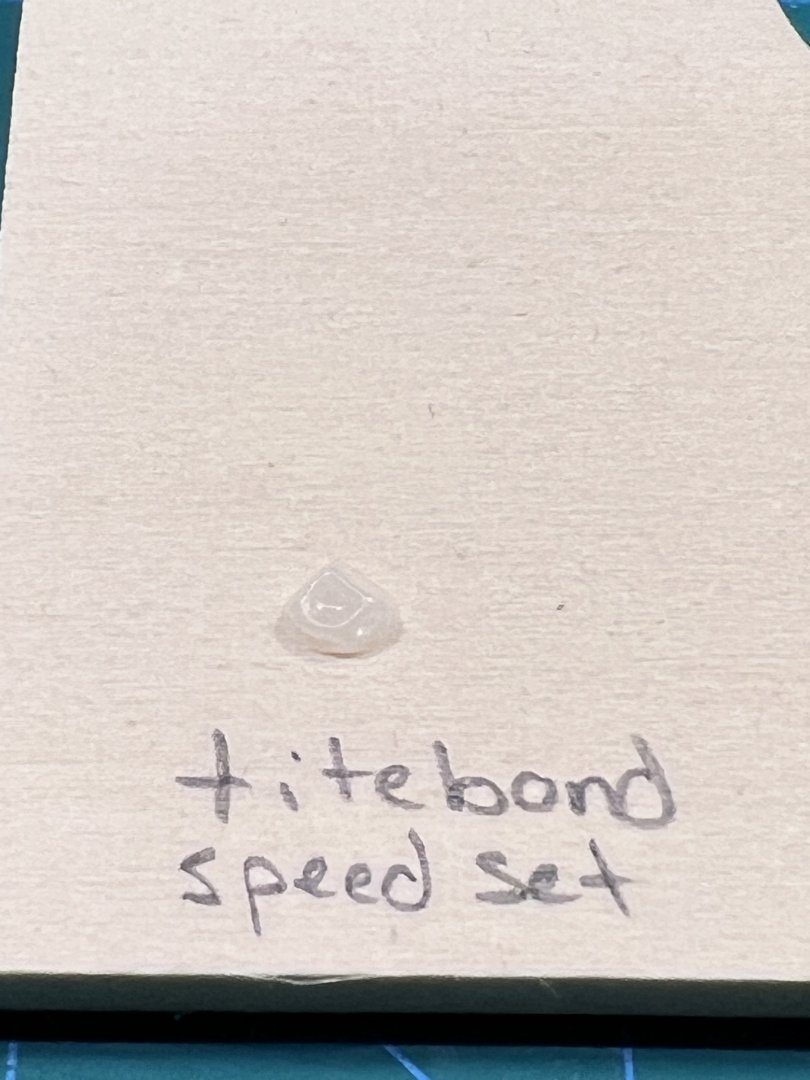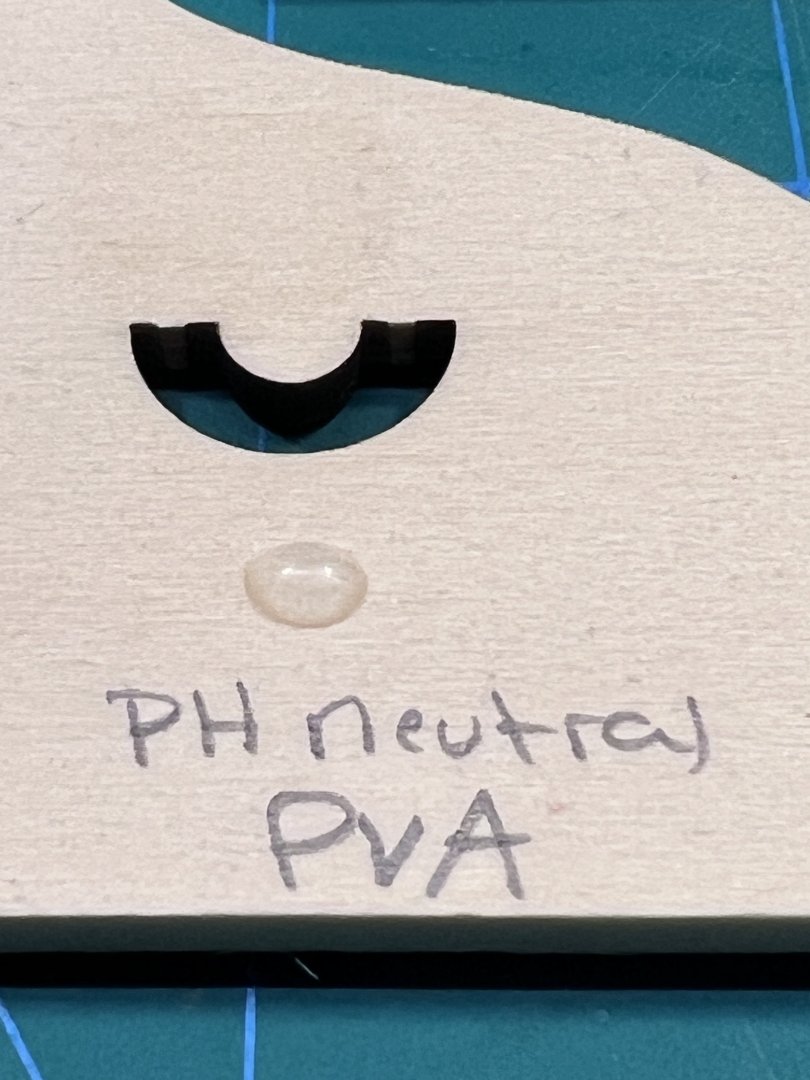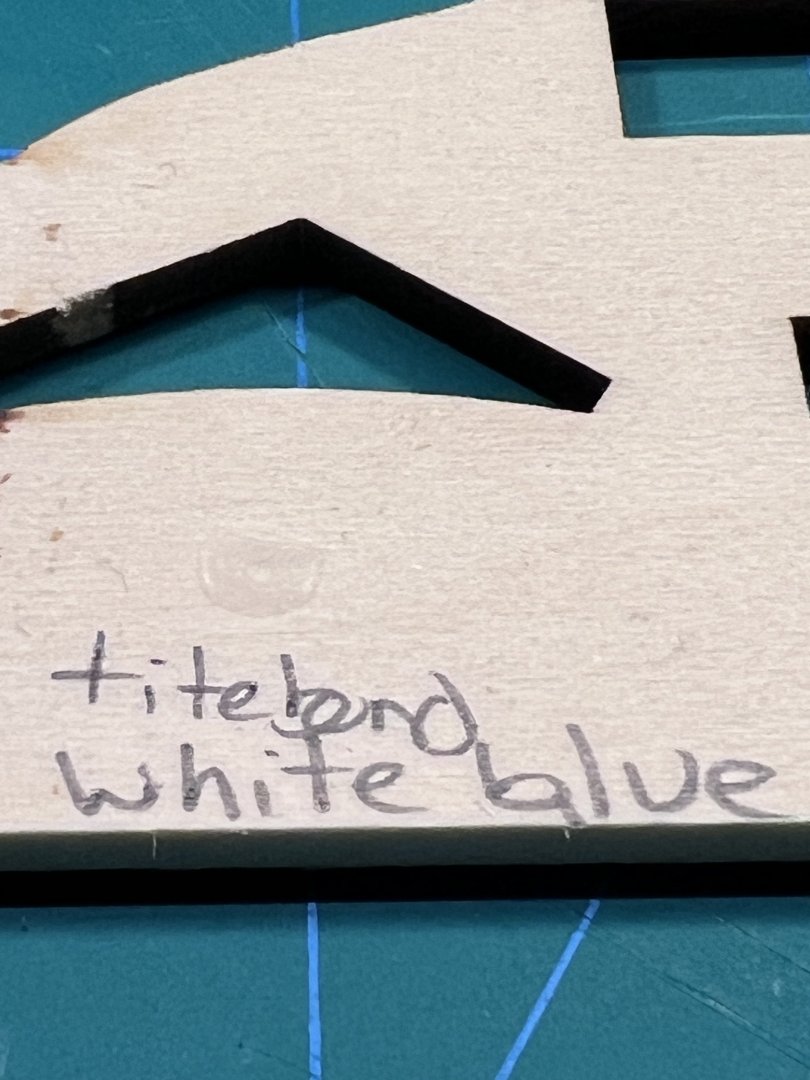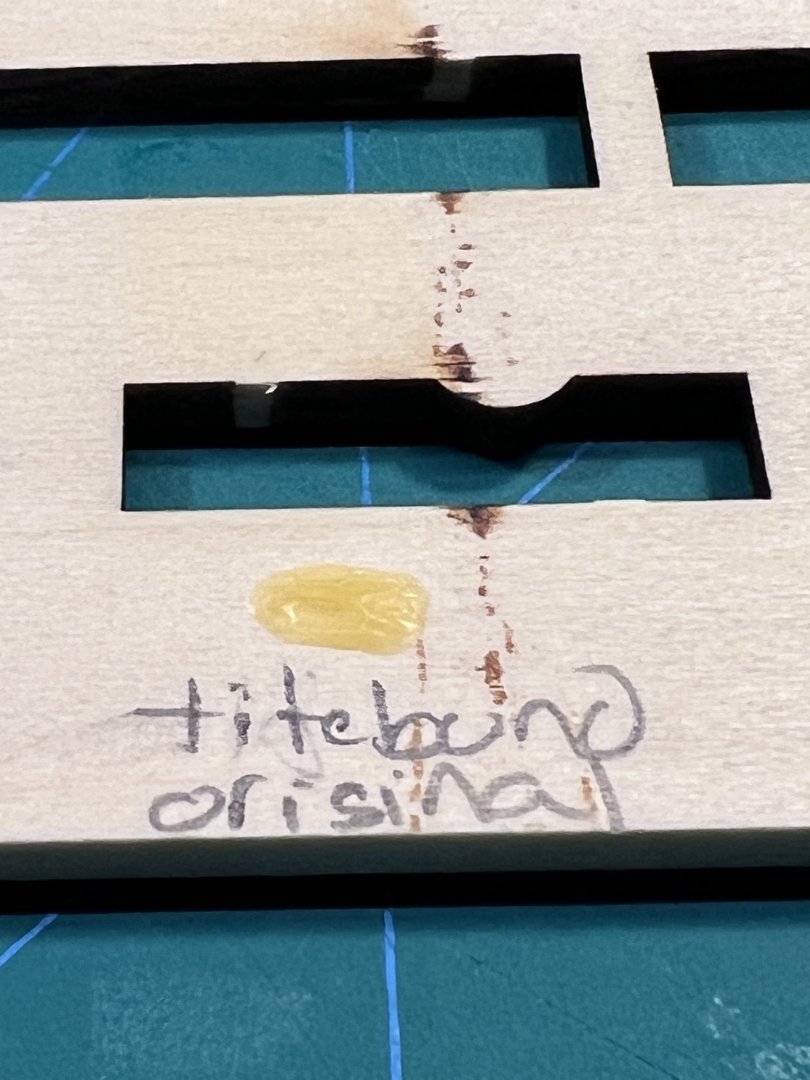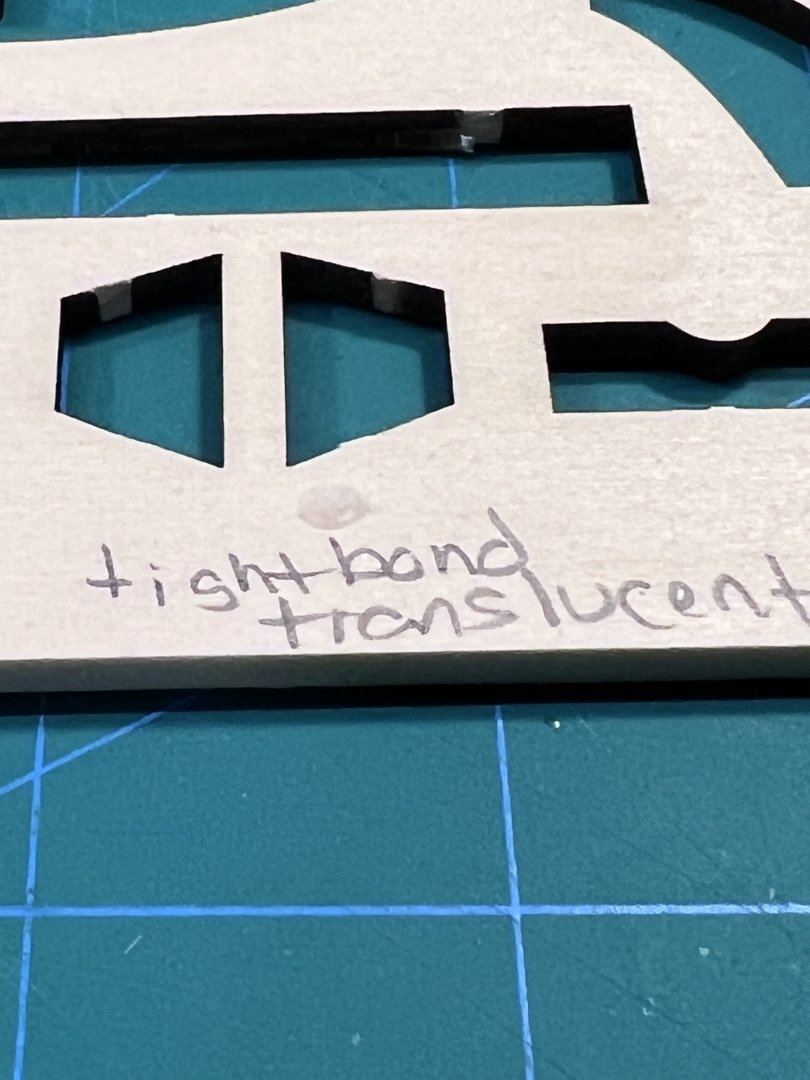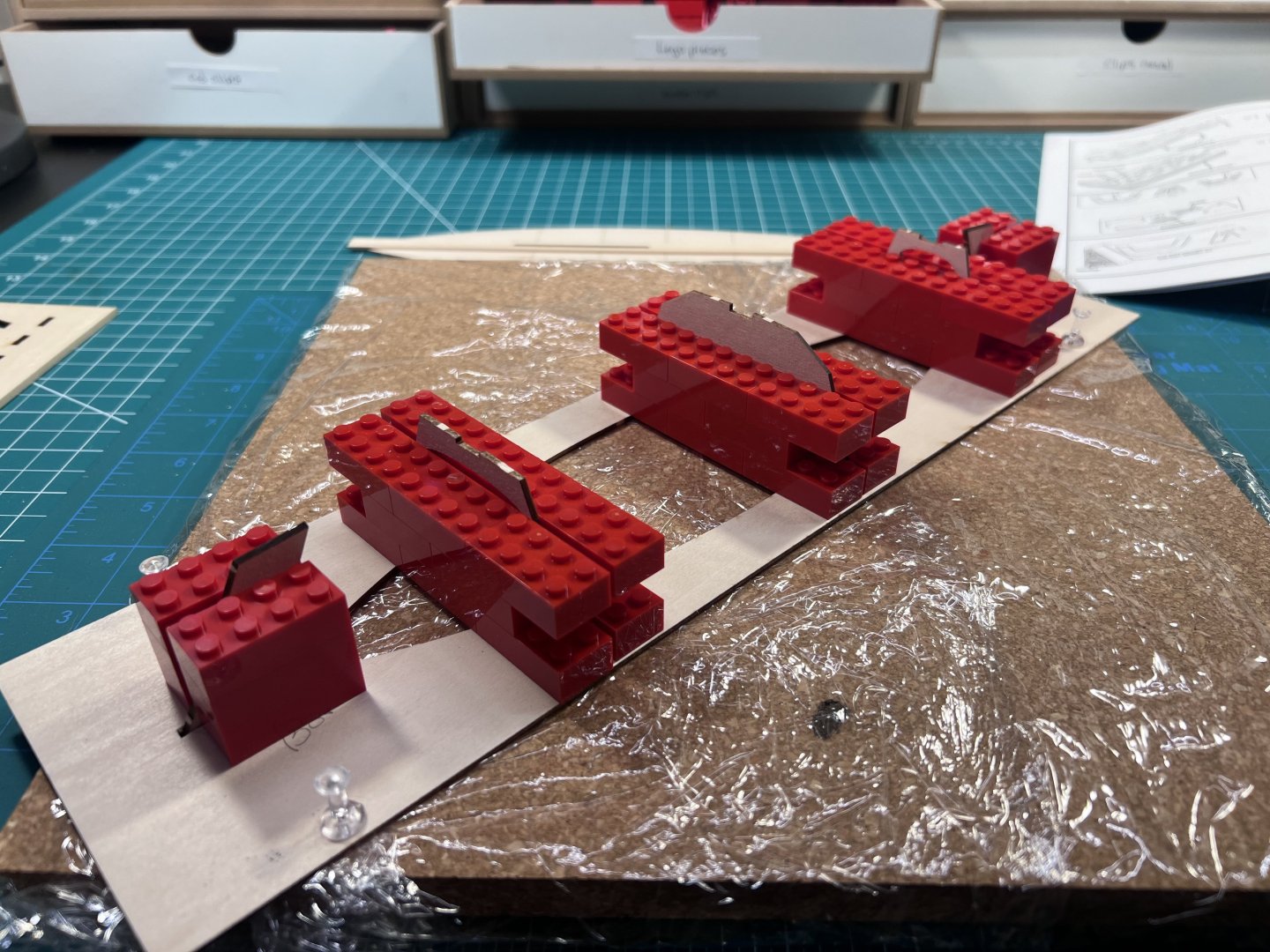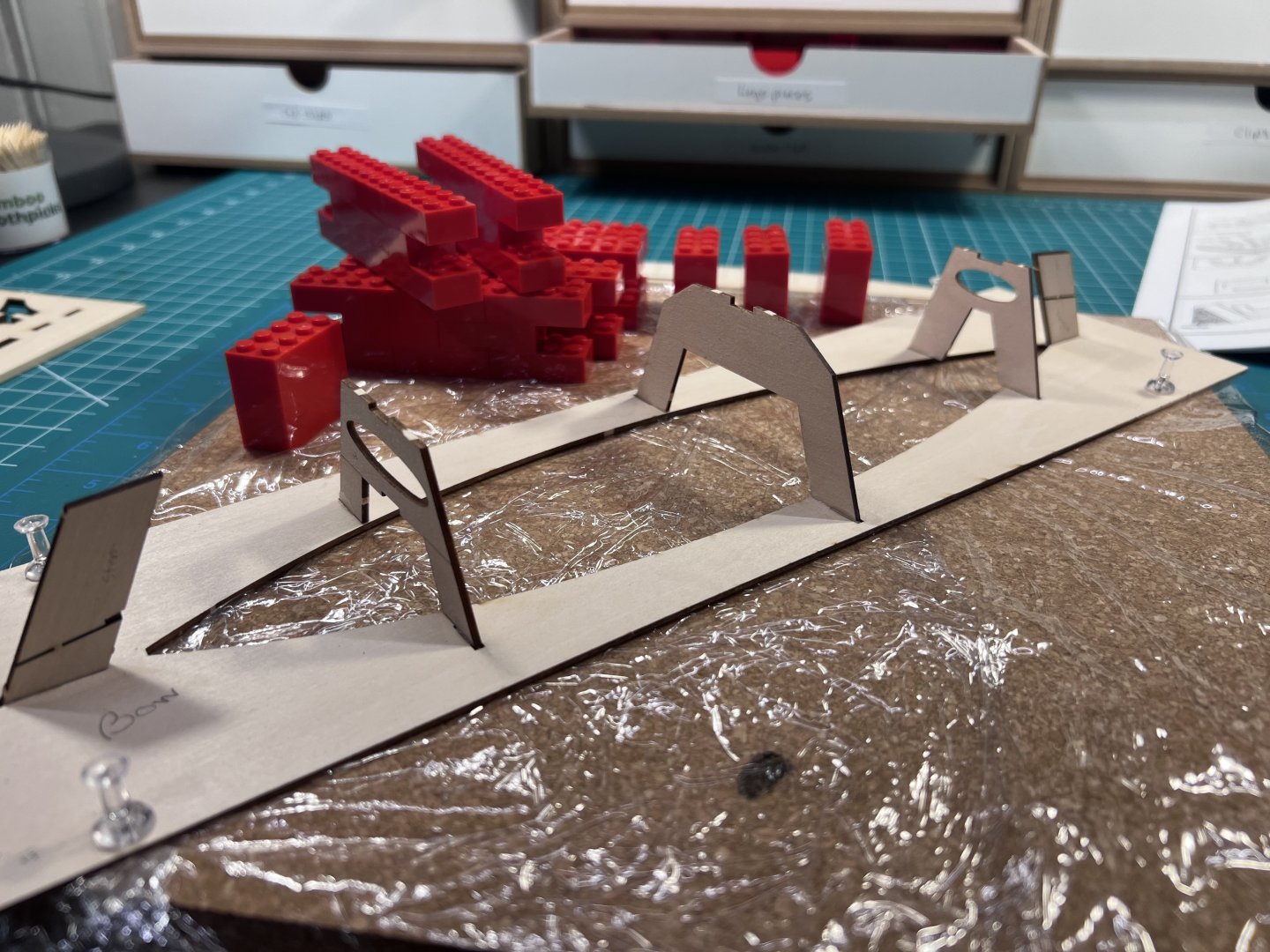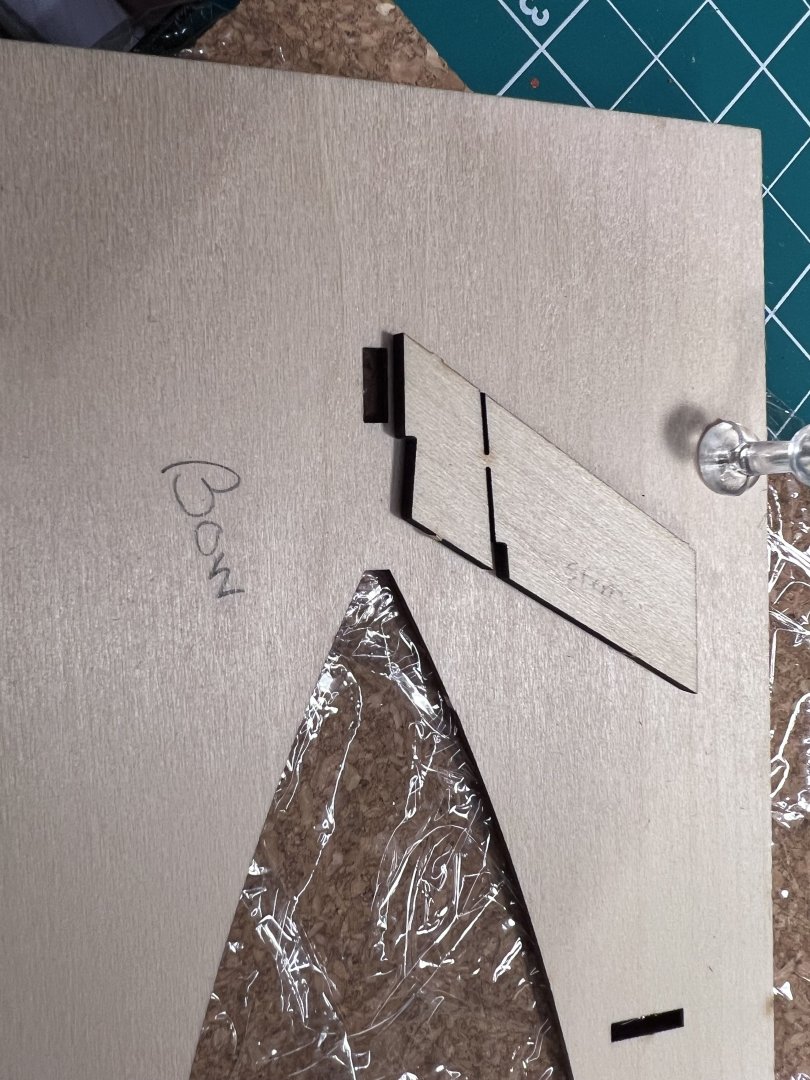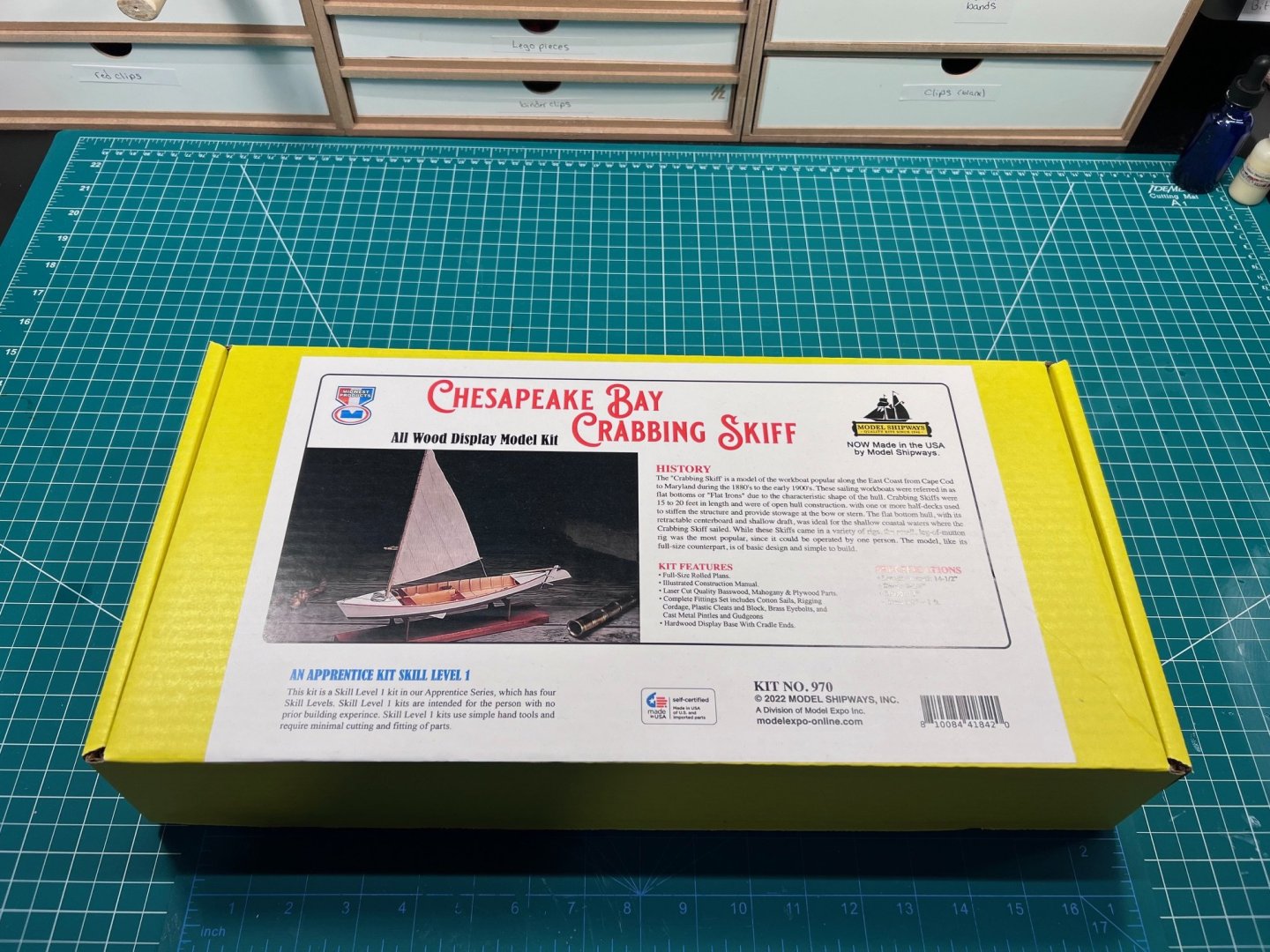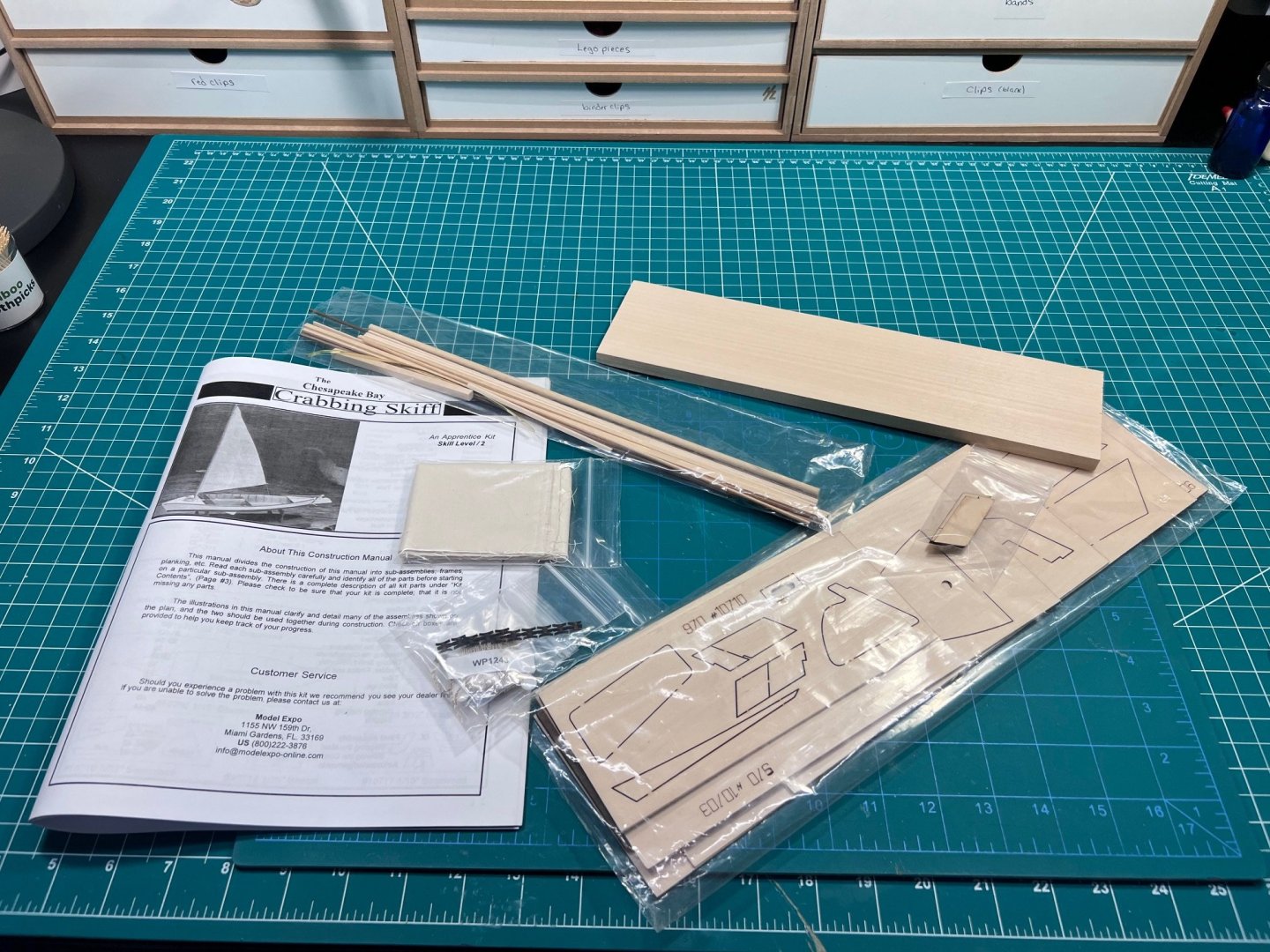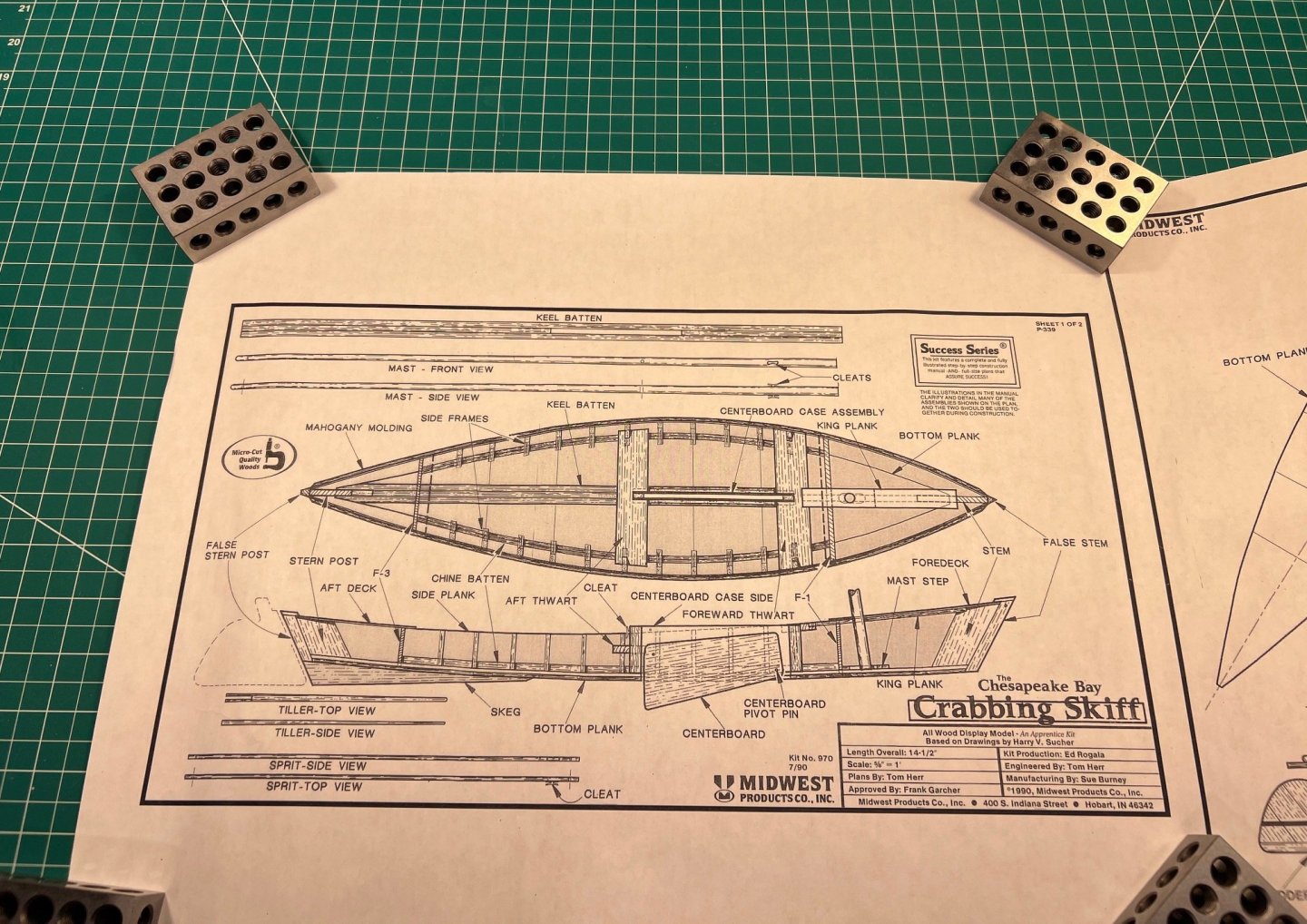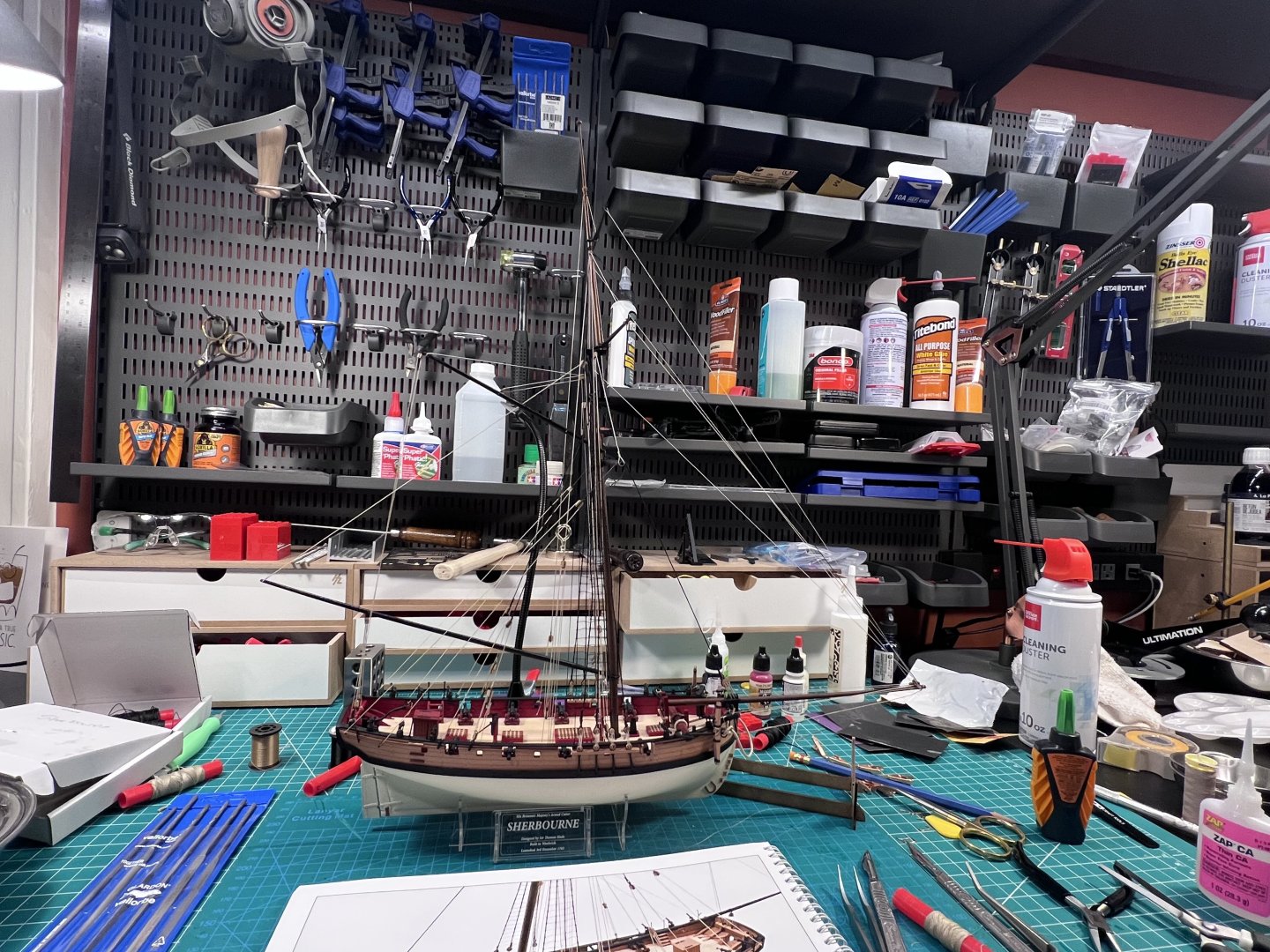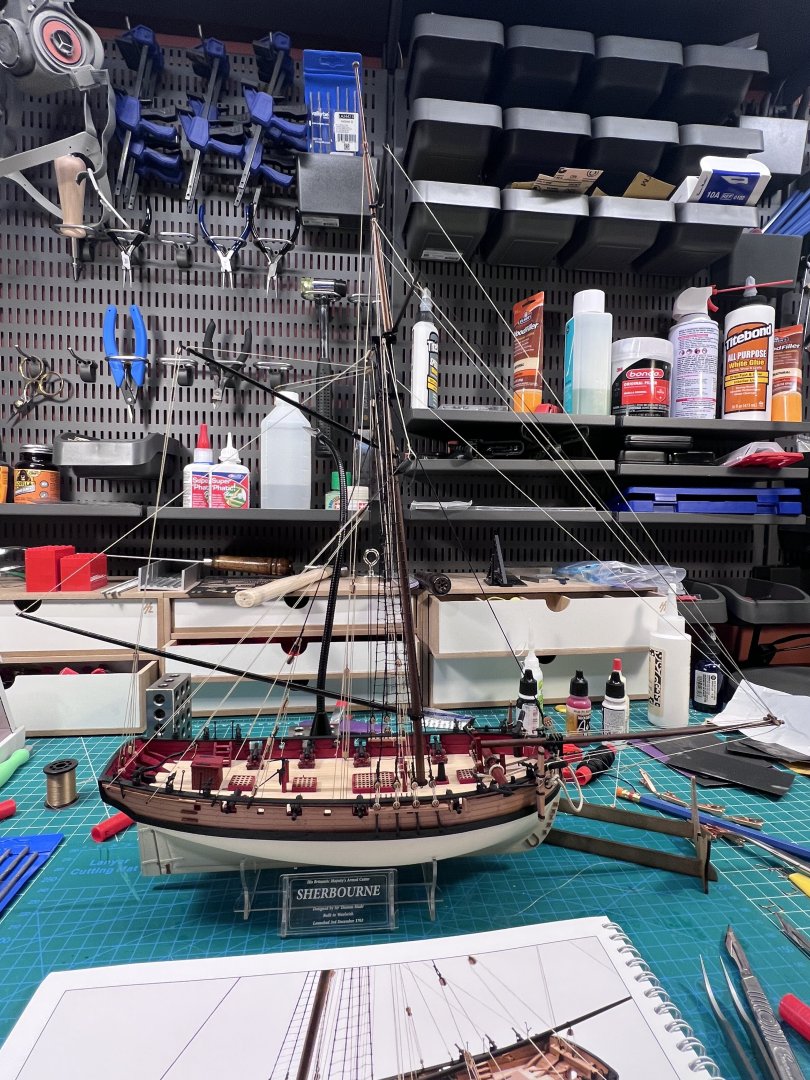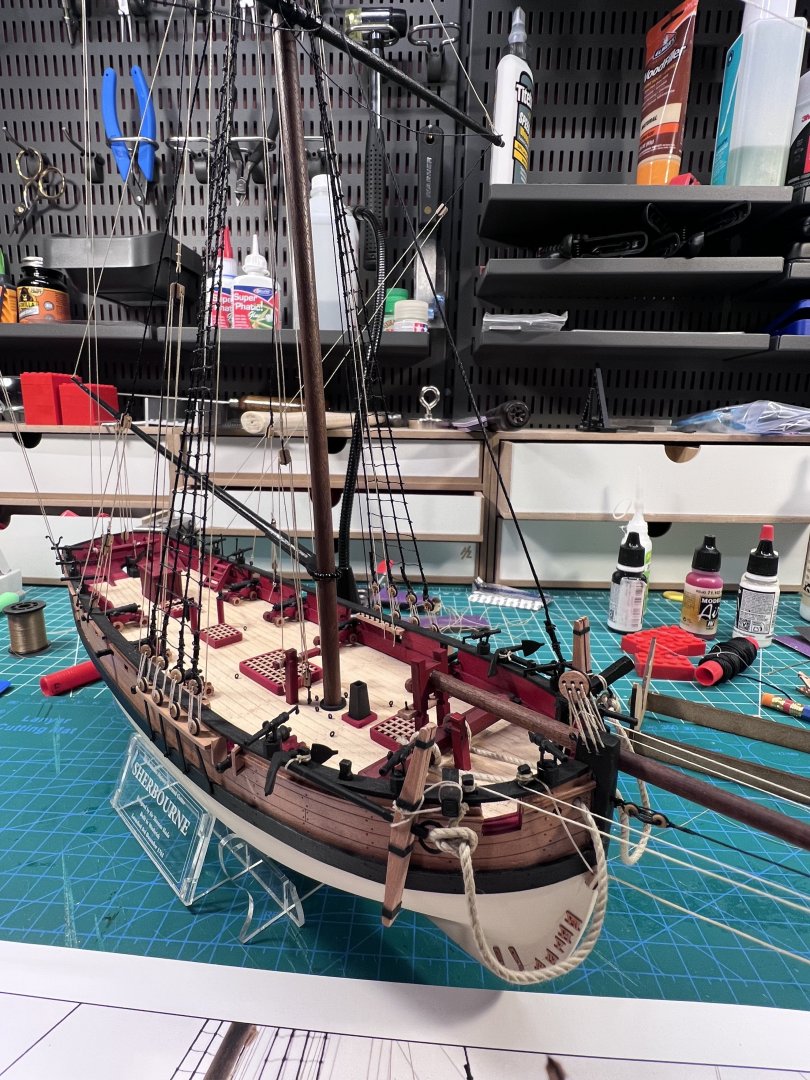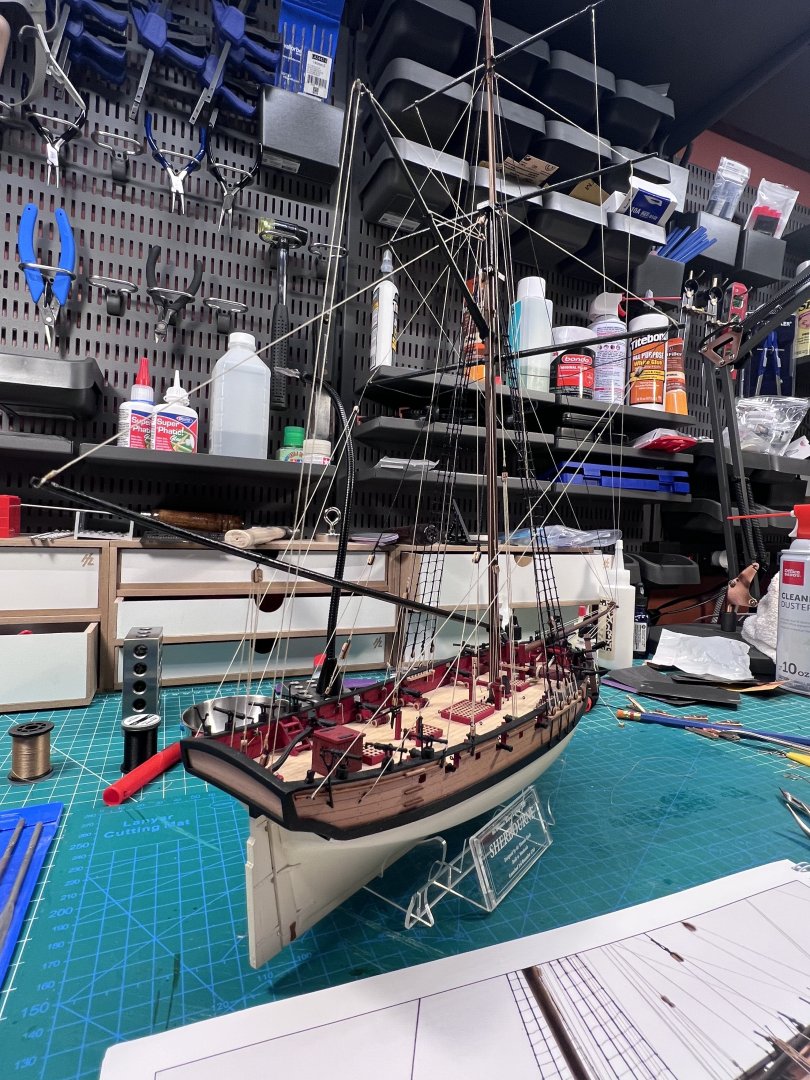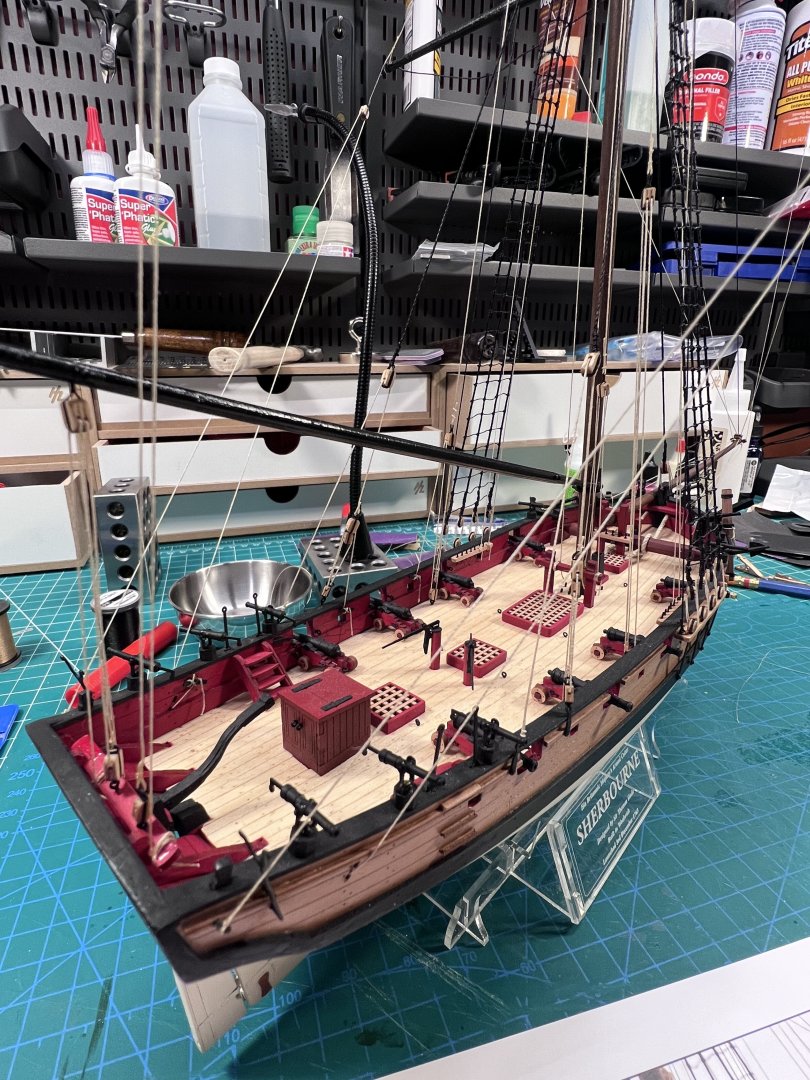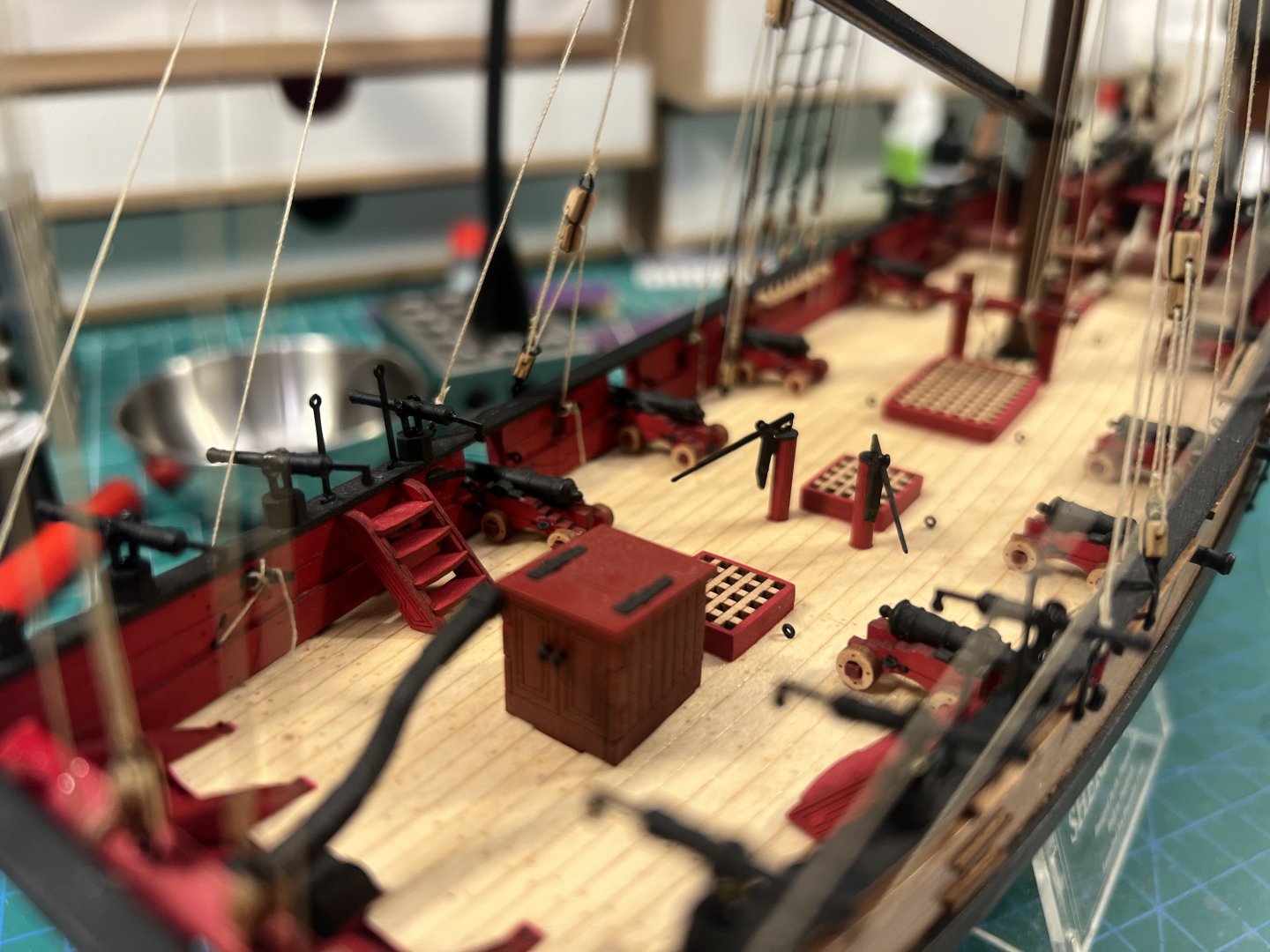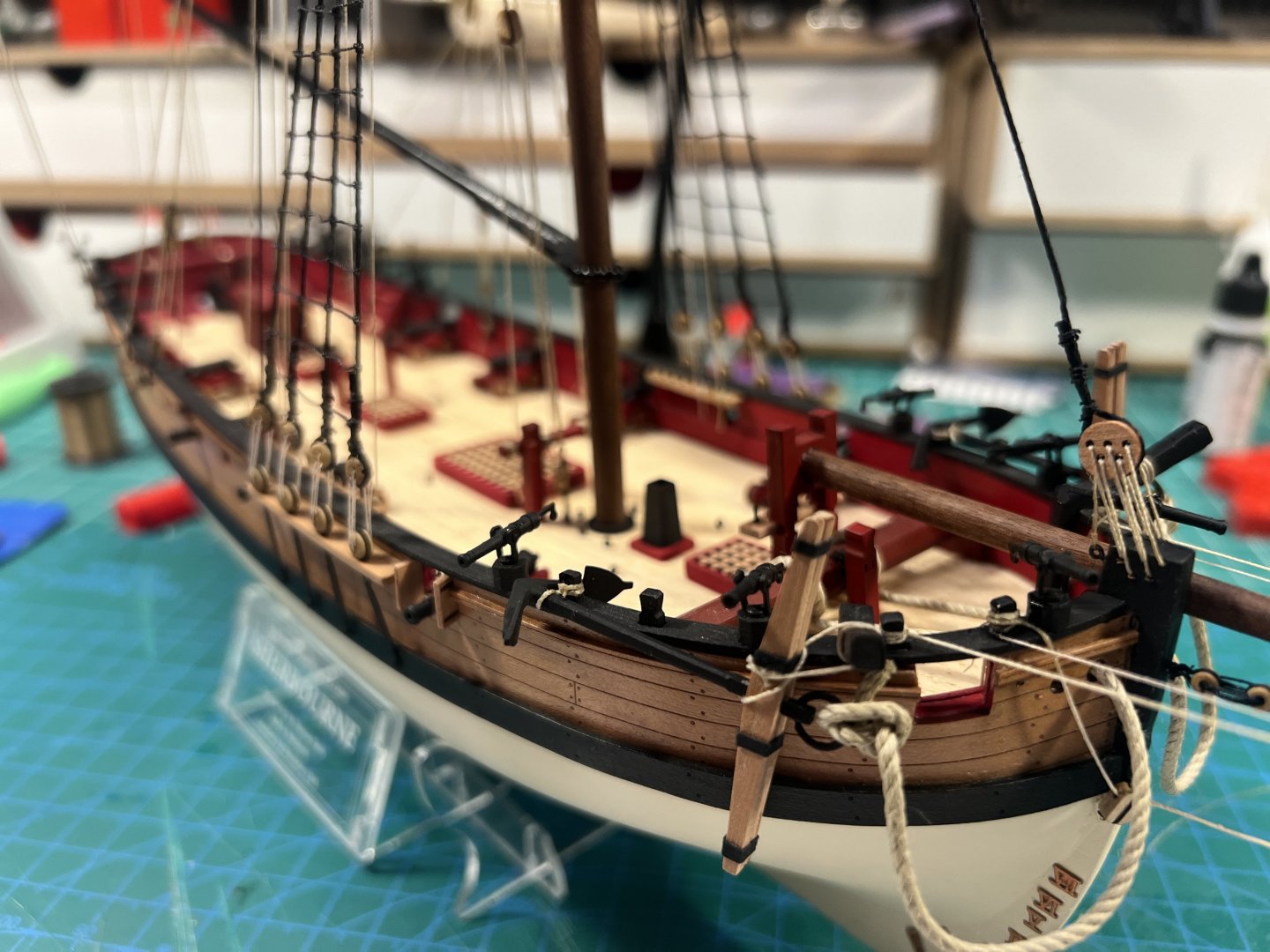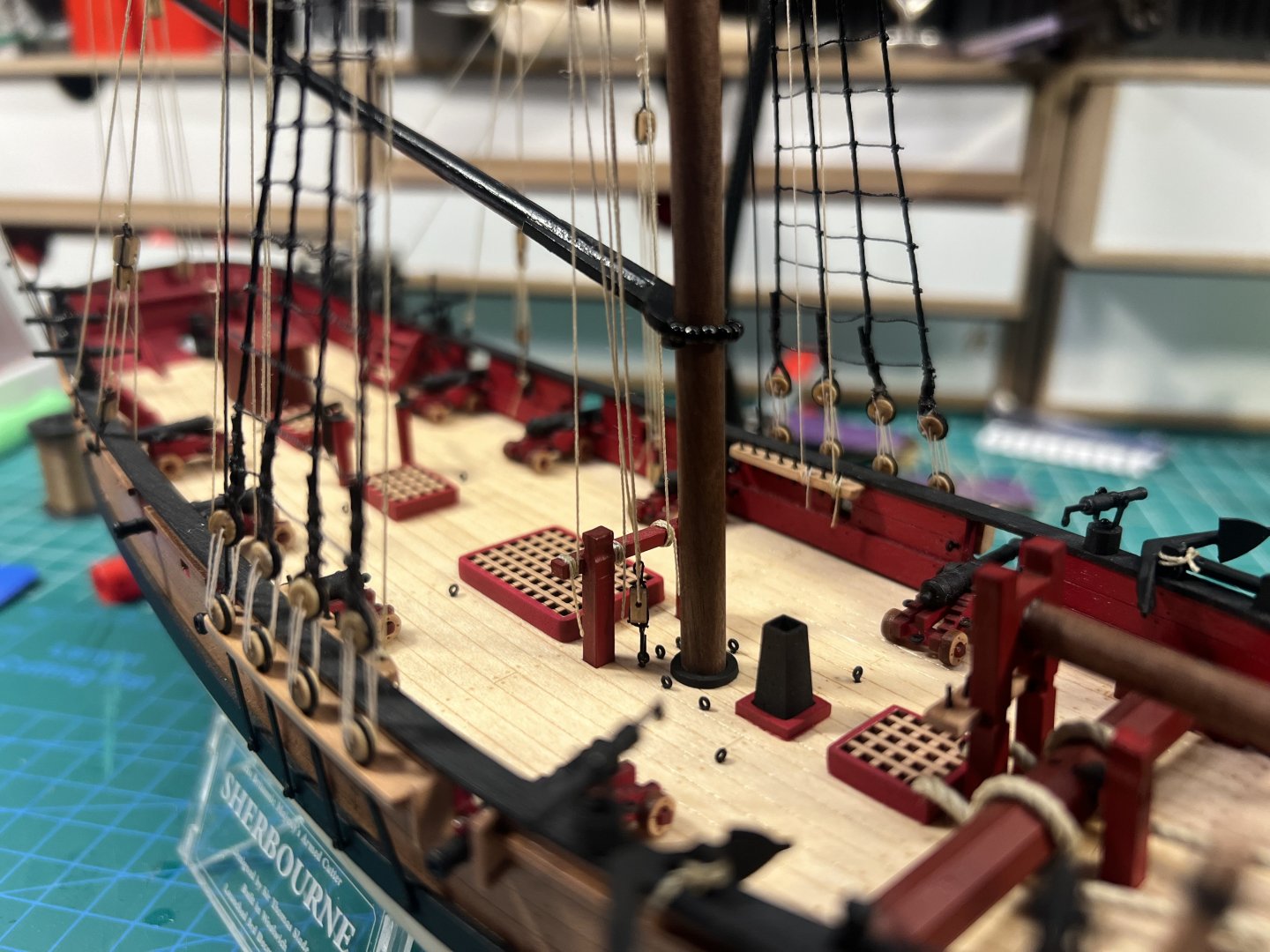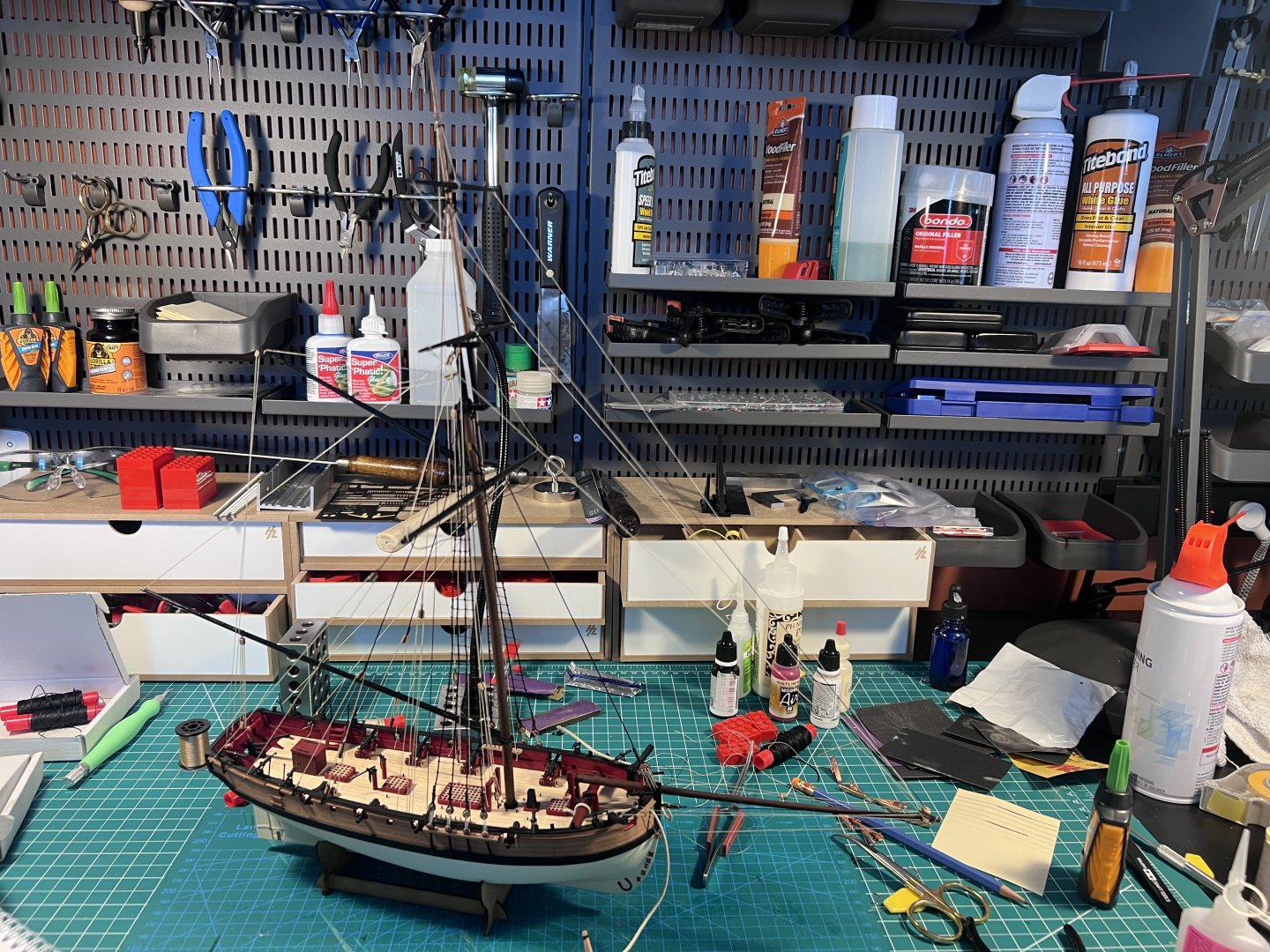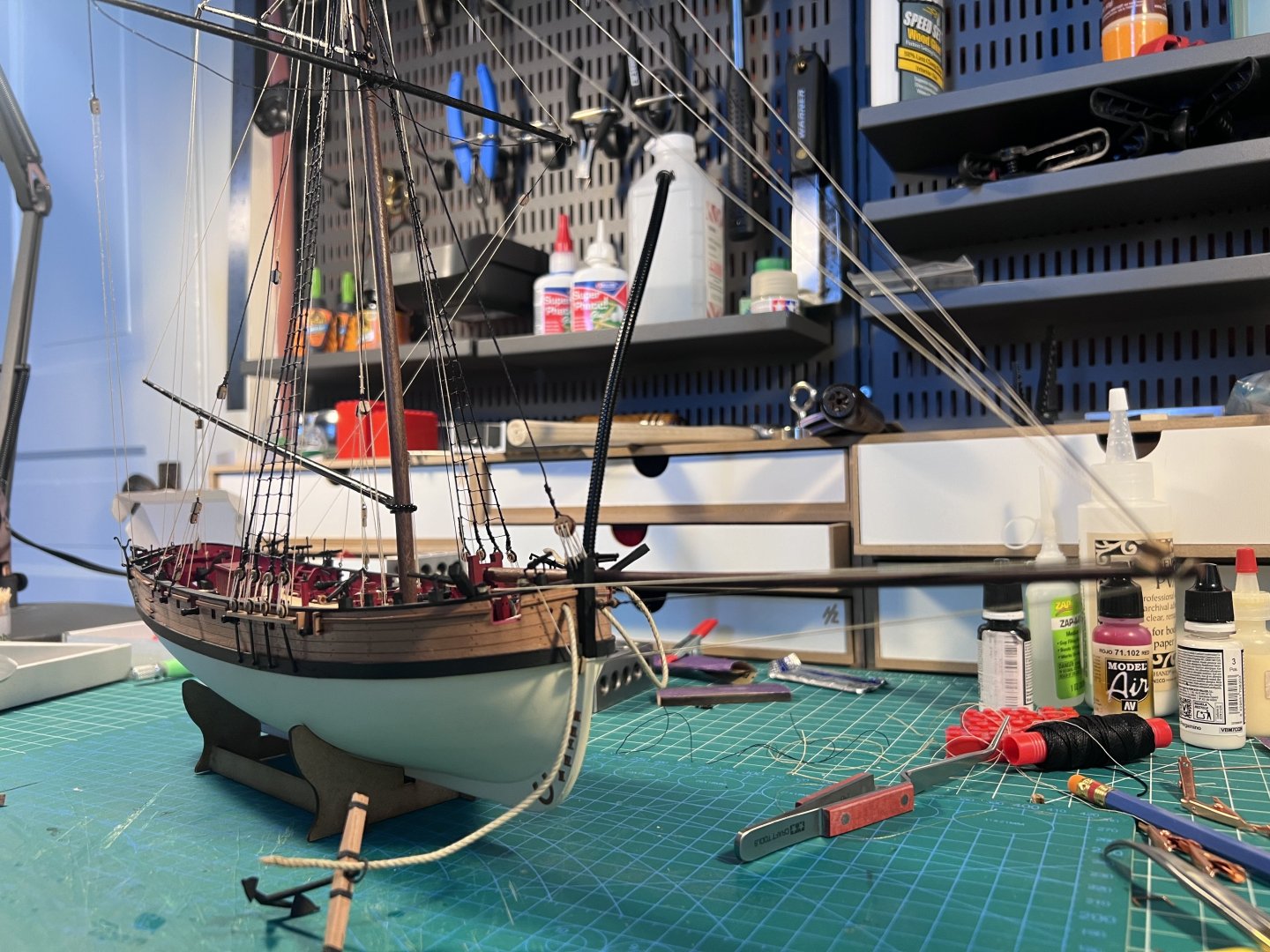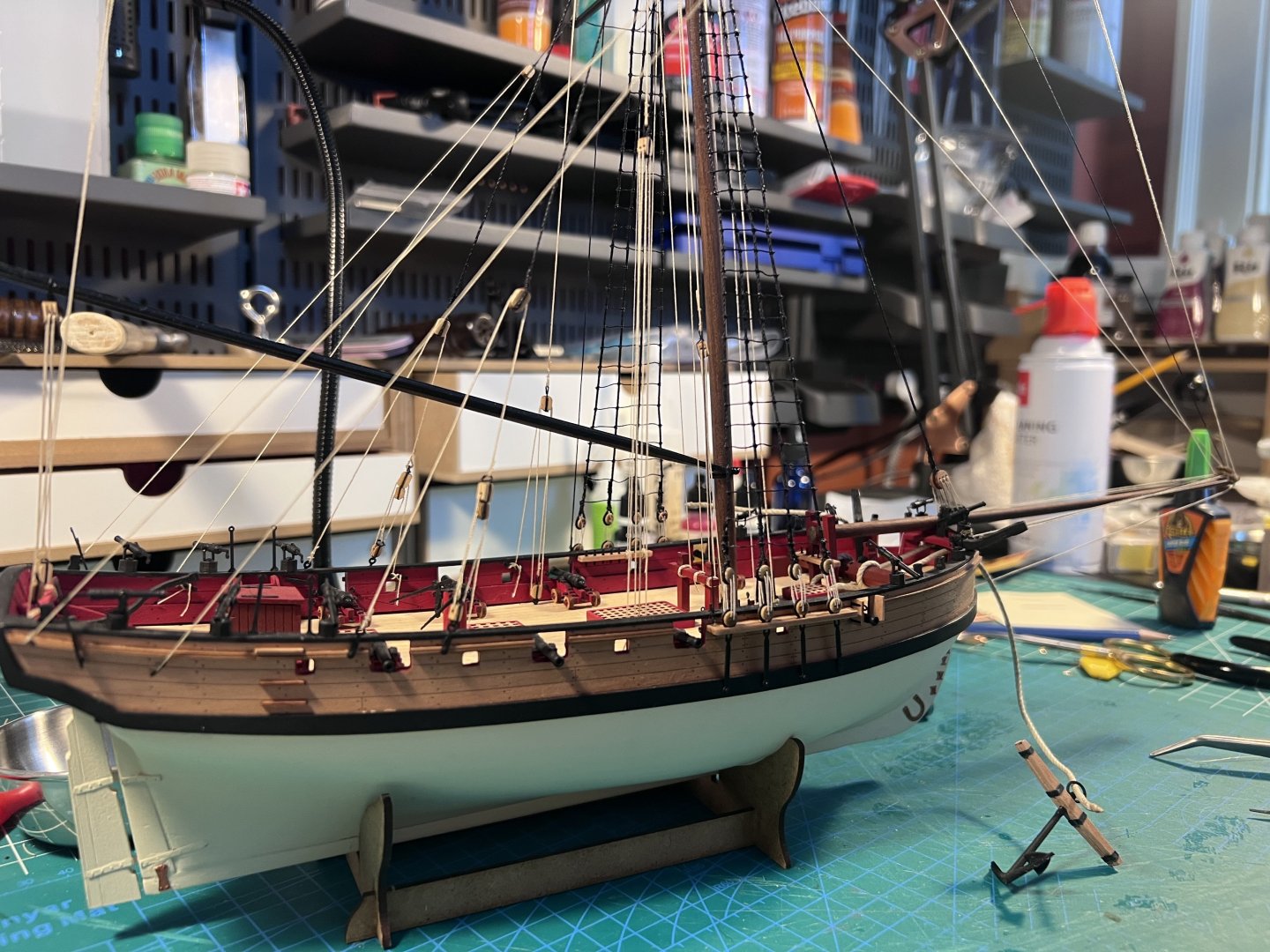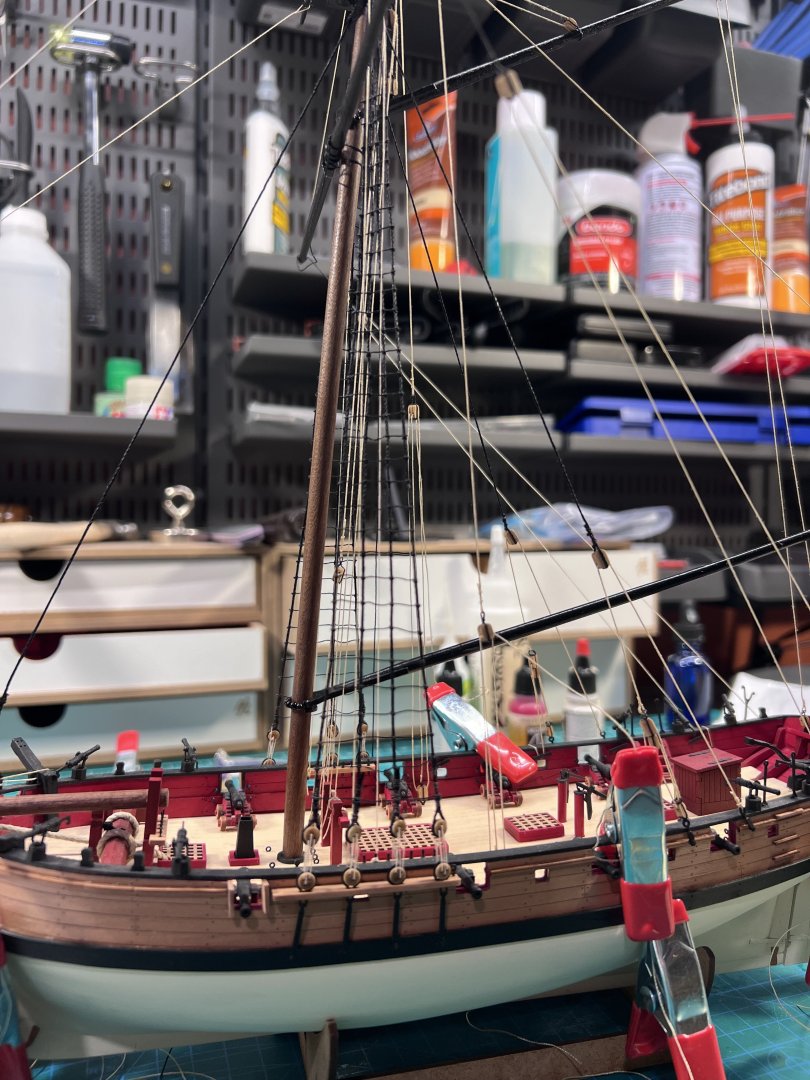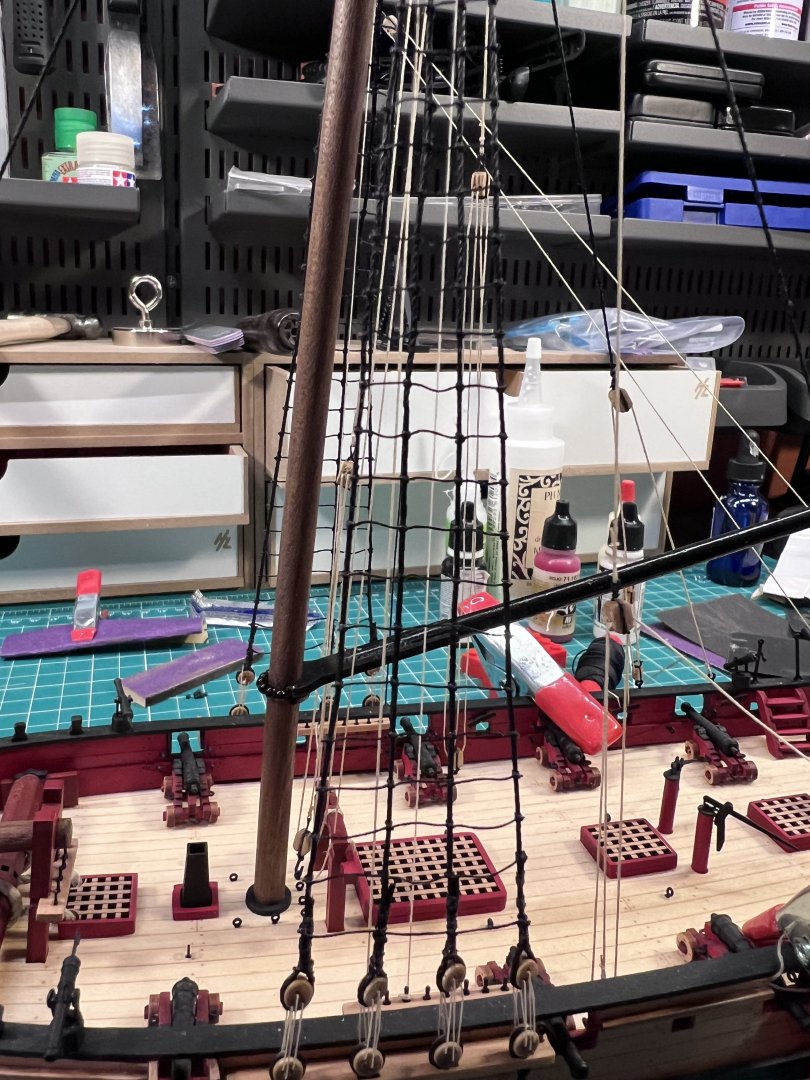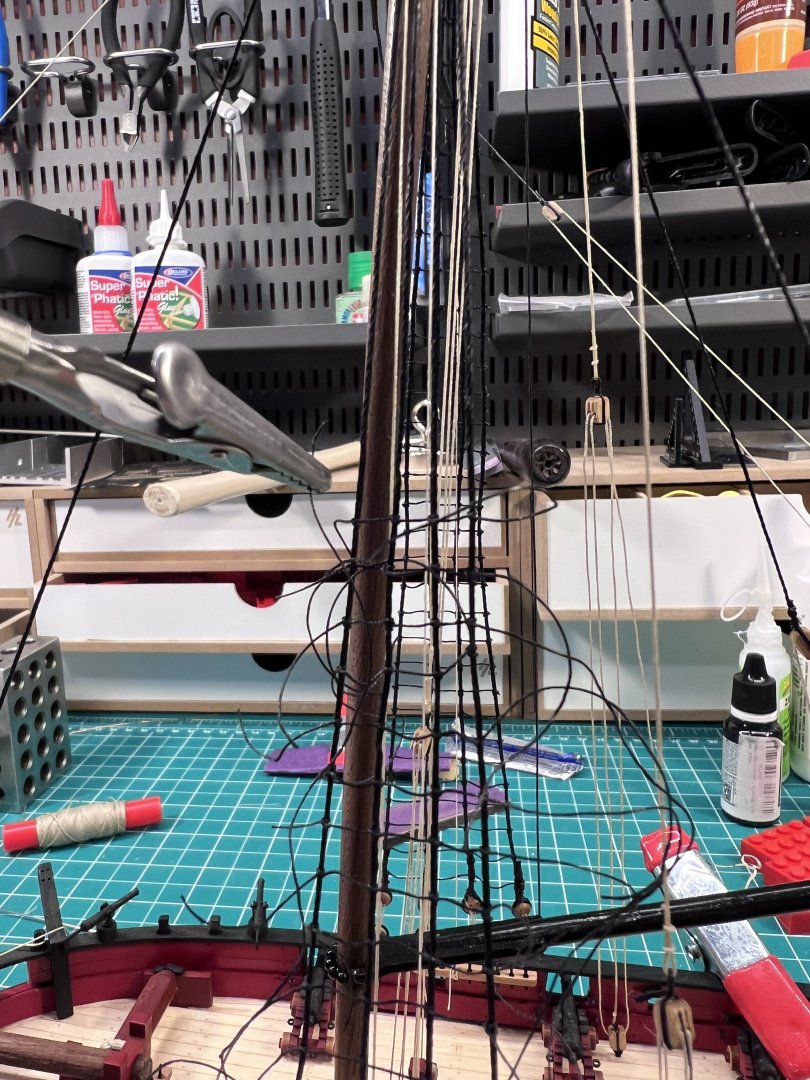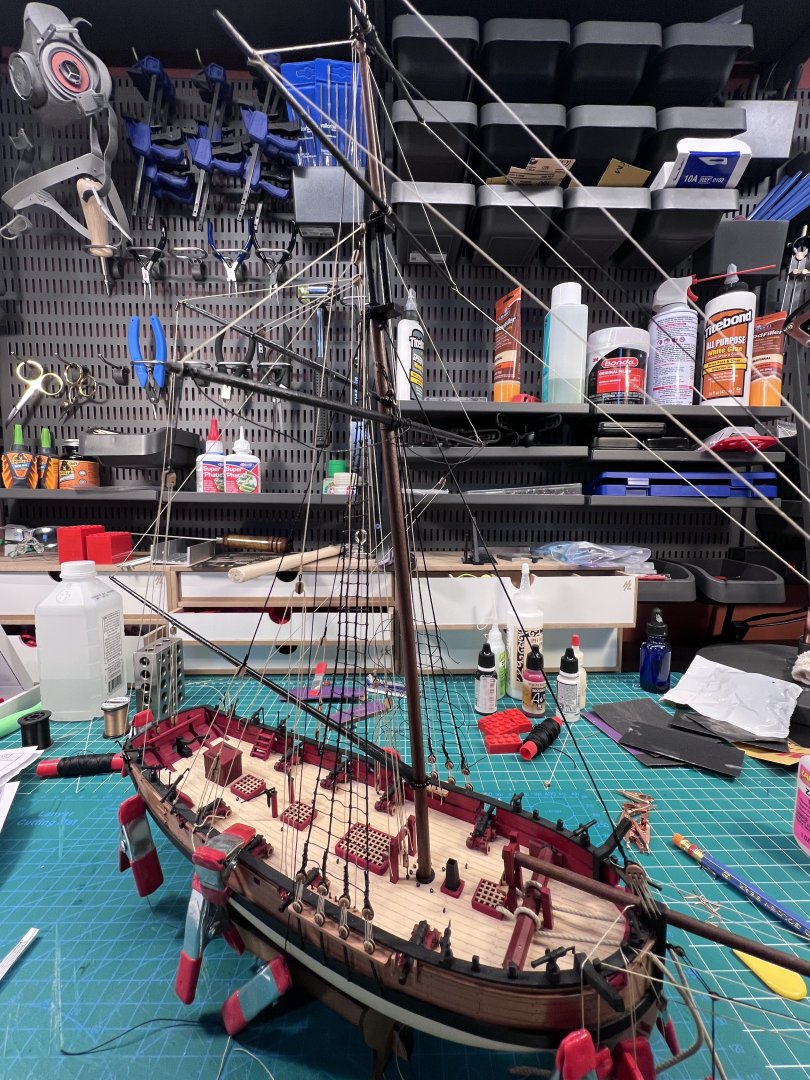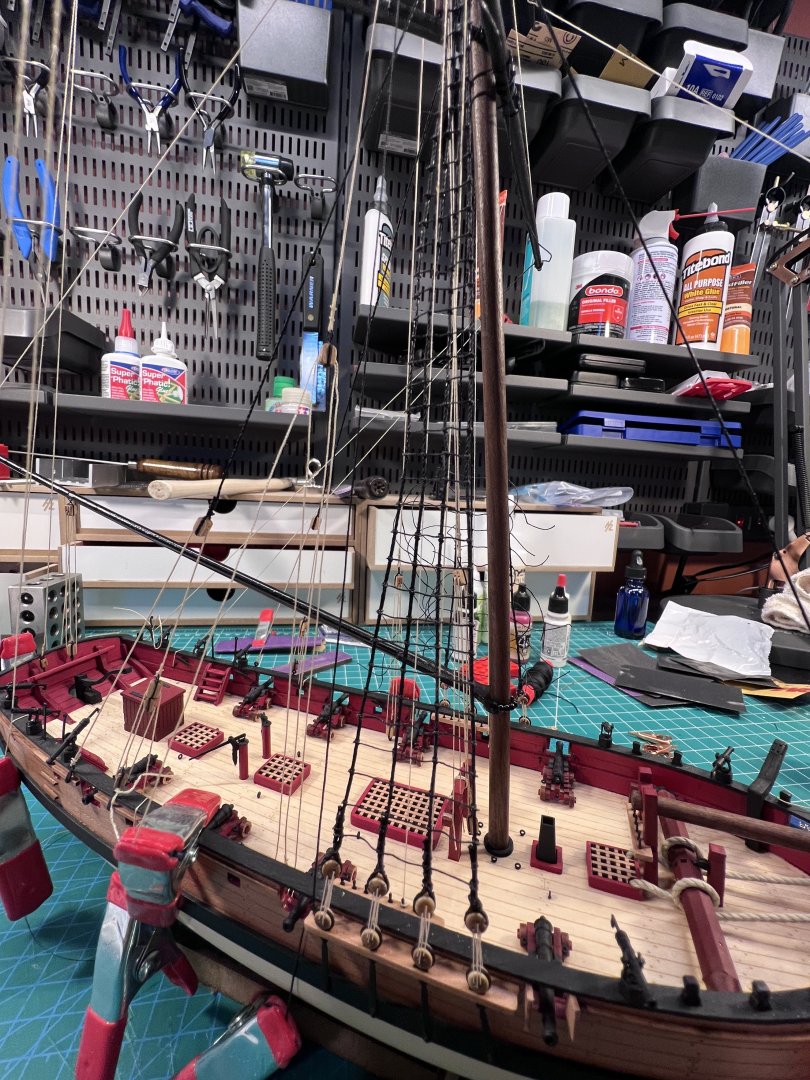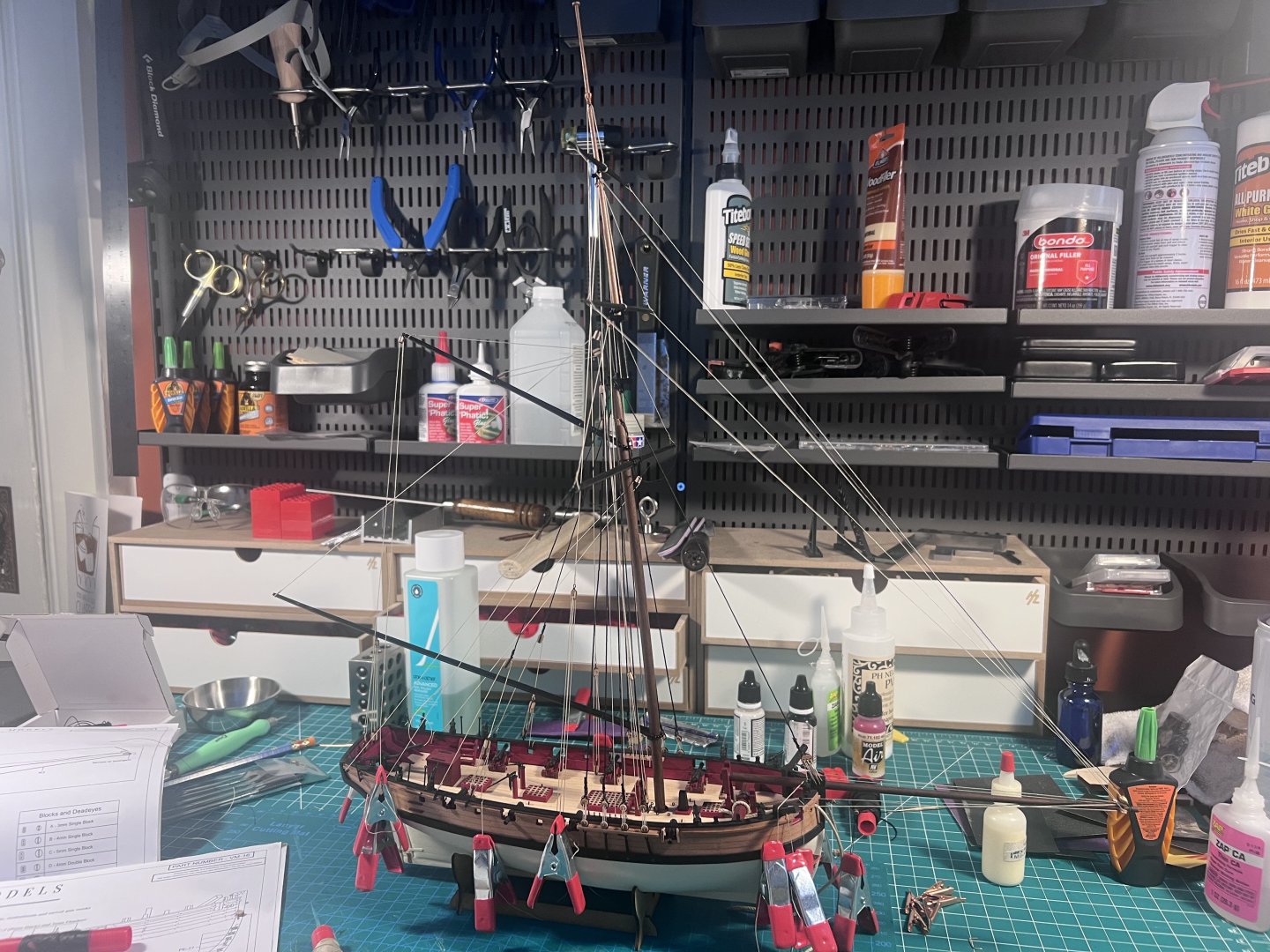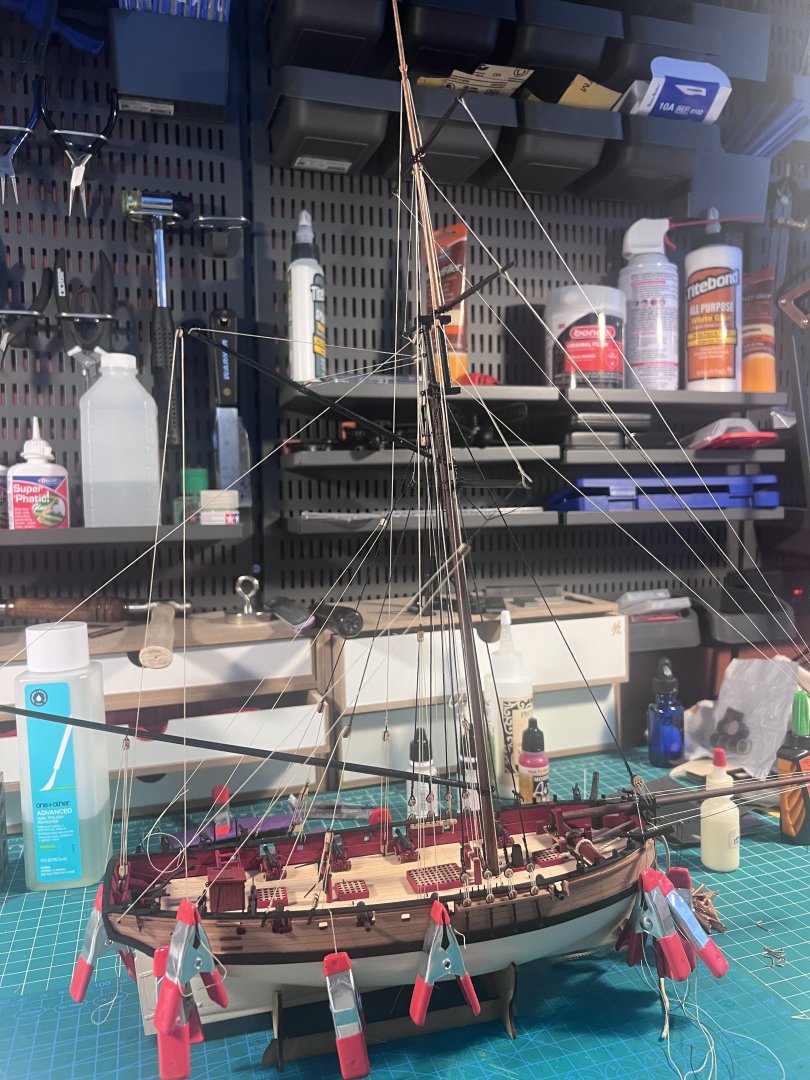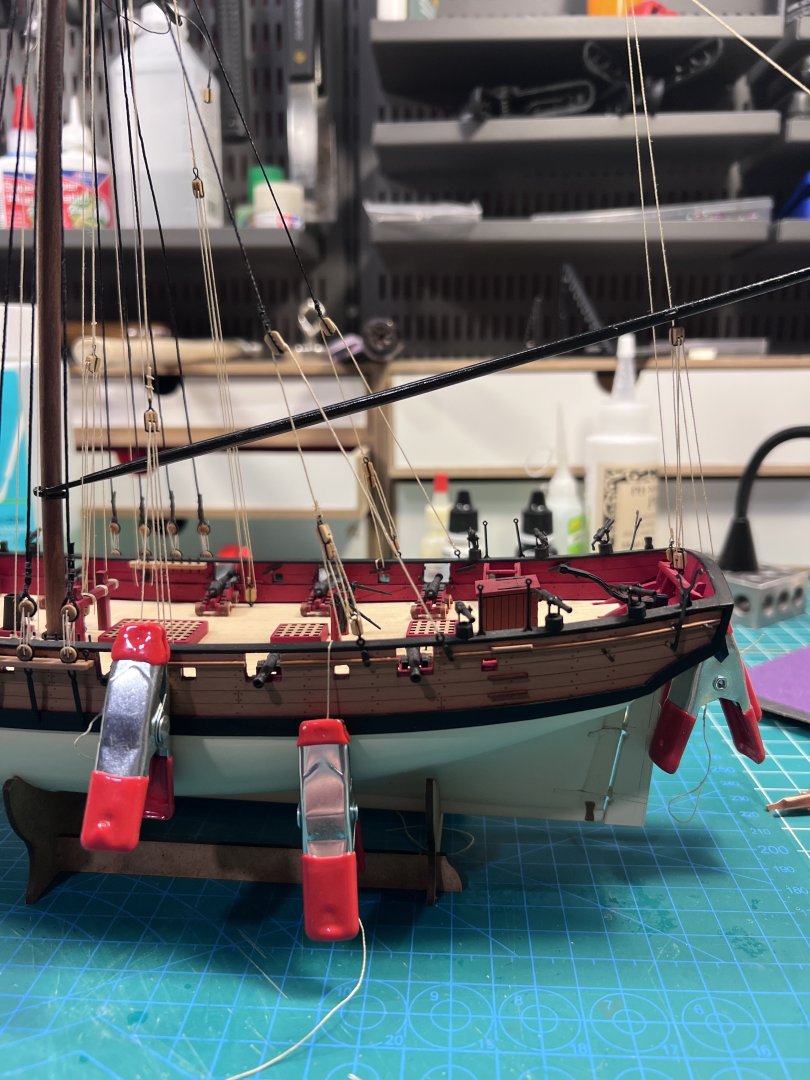
palmerit
NRG Member-
Posts
1,022 -
Joined
-
Last visited
Content Type
Profiles
Forums
Gallery
Events
Everything posted by palmerit
-
It's so much more helpful having as many build logs as possible. Thankfully, there are a bunch on the Sherbourne that I just completed. I learned something from all of them and I've also popped onto more current ones and occasionally answered a question or even just given a thumbs up. I've never felt like by starting a build log that I now have taken on some responsibility of being a definitive guide to the model. I'm certainly not qualified to be. I'll try to describe challenges I've had. And on some models (not Vanguard's, but others) I've struggled through mistakes in the instructions or the kit parts and I'll describe how I got around them. I've tried to give credit (and links) to places where I found how to do something (which might benefit someone down the road who is starting out and having to rediscover the wisdom on this site and elsewhere). For me, I mainly just like keeping a visual record of my own progress on a model. I do things simple. I take photos on my iPhone and then just upload directly on the iPhone and type in a short bit of text. There are times when I have more to say and I'll still upload photos from my iPhone, save the response, and then hop over to my computer since it's quicker to type from there. I'm sure for folks who take photos with a camera and need to copy from a phone or camera to a computer and then get those photos uploaded to this site that keeping up a build log might be a bit more of a chore.
-
- 133 replies
-
- Ranger
- vanguard models
-
(and 1 more)
Tagged with:
-
- 133 replies
-
- Ranger
- vanguard models
-
(and 1 more)
Tagged with:
-
Getting ready to dye the sails. I was looking at some other build logs of the Ranger and was recommended to me on this one when I asked about it. @Dfell says in their log "Sails all dyed using RIT Cocoa Brown and Scarlet (equal mix of each)." @DB789 says in their log "Decided on a colour for the sails, RIT dye Tan (mixed quite strong) and after that the sails dipped for a minute or two in weak RIT dye Scarlet mixture, the latter to give the sails a less bland brown colour." @DB789 added earlier on my build log "I did try mixing dyes together based on the colour mixes on the RIT website - I think that’s probably the recommended way of dyeing. My dye mixing is all in the Nisha log that I sent to you. ... I only tried the sequential dyeing for this set of sails as I was disappointed by the colour achieved from tan dye alone. Had no idea if it would work, but was very pleased with the outcome. " The instructions for another Vanguard fisher, the Lady Eleanor says "you can use any dye of your choice, but for prototype, this is the product we used" and it shows a RIT dye in Wine (Bordó). @DB789 also recommended this RIT video. First time dying something except for tie-dye. We'll see how it goes. I did buy some linen-like fabric to practice on. It's not quite the same as the sails, but closer than something like an old t-shirt would be. I'll post some comparisons between the fabric and the actual sails when I'm done playing around.
- 133 replies
-
- Ranger
- vanguard models
-
(and 1 more)
Tagged with:
-
I had accumulated a few different glues. I had never compared them on their translucence - until now. Titebond original is bright yellow. Titebond Speed Set, Titebond White Glue, and Titebond Transluscent are variously white to semi-opaque. PH Neutral PVA (bookbinders glue) is nearly clear. I’m going to relegate the original Titebond to the cellar. I’ll use the others when I’m pretty sure I won’t accidentally get some glue on bare wood - and if I do I’ll scrape it off before it dries. I’ll use the PH Neutral bookbinders glue for times when I want a clear glue - like when using a diluted PVA on ratlines.
- 22 replies
-
- crabbing skiff
- Chesapeake Bay crabbing skiff
-
(and 1 more)
Tagged with:
-
The instructions call for making a makeshift “square” from the corner of a square sheet to align vertically the frame pieces, one of which will be removed later. Lego pieces work better - better even than using a real triangle or square.
- 22 replies
-
- crabbing skiff
- Chesapeake Bay crabbing skiff
-
(and 1 more)
Tagged with:
-
Well, the frustration begins. The stem and sternpost are supposed to slot into the building board but the tabs on the piece are not the same size as the slot they are supposed to fit into. (Easy enough to just cut the slot out longer, but given that this is a relative beginner model it’s the kind of thing that can stop a beginner in their tracks. A lesson you learn is that you can and you need to improvise and treats these errors in the model as small puzzles you need to solve. I just don’t know why model kit companies don’t see it in their interests to try to minimize these basic errors, especially in starter kits.)
- 22 replies
-
- crabbing skiff
- Chesapeake Bay crabbing skiff
-
(and 1 more)
Tagged with:
-
It's been interesting watching Olha Batchvarov's build of the Gunboat Philadelphia on YouTube. The planking is different (it's wide sheets of basswood that are too thin to edge bend), so don't use it as a how-to for the kind of planking you're doing. What's been eye-opening for me is how long someone with that much experience takes to get a piece of planking on the hull or the deck just right. It's cutting, checking, sanding, maybe some more cutting, checking, some sanding, checking, sanding, checking, sanding some more, checking, checking again, some more sanding. I know she's more efficient than most people watching her channel. But I could certainly imagine that some who have built that model just glue the pieces in place with a couple cuts and get the model "completed' way more quickly than she does. Expertise makes things quicker. But it's really seemed to me to be a place for lots of patience. Watching her video has helped me realize that I'm not doing something wrong if it takes me a while and sometimes I just need to toss a strip and start over. The NRG Half Hull model also helped me understand the shapes that pieces of planking have to take. That model uses a different approach in that you cut out the planks from large sheets of basswood to the right size to fit the 3D geometry instead of using long thin strips of wood bent to shape. Edge bending of planks is a different technique. But the Half Hull helped me get a better mental image of what I was trying to achieve by bending planks in two orthogonal directions and the shape I was trying to achieve when fitting a piece onto a 3D hull.
-
I won the Chesapeake Bay Crabbing Skiff (Midwest Products) on Olha Batchvarov's YouTube channel a couple months ago. Model Expo / Model Shipways has some kind of sponsorship with Olha's channel and they send her their model kits for unboxing videos and then she raffles those kits away. My understanding is that Model Expo / Model Shipways bought out the Midwest catalog and they've been slowly reissuing the Midwest models, starting - I've heard - with the simpler kits. Having worked on a couple of the Midwest reissues, it seems like not a whole bunch has changed in the models from how they were originally published, though sometimes there are differences between the instructions and how the pieces are laid out on the boards (creating all sorts of confusion that I hopefully won't suffer from on this build). I can also imagine that some of the pieces like blocks will be different from the originals. There have only been three other builds of this model, the latest finished in 2019. I think I have enough experience that this should be a relatively easy and perhaps quick build. With the new semester starting - my first class is on Thursday - I wanted something simple to work on. I'll be getting back to the Ranger soon too, with the rigging and sails next to come.
- 22 replies
-
- crabbing skiff
- Chesapeake Bay crabbing skiff
-
(and 1 more)
Tagged with:
-
This weekend, I bought some black fabric and I’m going to try to use my nice camera to take some nicer photos with a black background. It might take a bit of playing around. I’ve been reading the section of photographing models.
- 177 replies
-
- Sherbourne
- vanguard models
-
(and 3 more)
Tagged with:
-
Well my first model is done. The first model I started, a little over a year ago. My first model, my first planking, my first real rigging. A model filled with more firsts than I can count. Along the way, I did complete five other (simpler) wooden ship models (and one Lego ship model). I did not step away from the Sherbourne over this past year because of any frustration with the model, but because I wanted to get some more practice on the fundamentals and to be able to take some time researching and learning about things like rigging - especially rigging. So my first model started, seventh completed. When I first decided last year to try out a wooden ship model, I really was at a loss as to what model to build. If I had not found this site, I probably would have equated wooden ship model difficulty with something like Lego model difficulty and bought a wooden ship model far beyond my ability (far beyond my ability now), gotten a few weeks into it, and packed it away in the cellar. The Vanguard Sherbourne really is a great first model. It's definitely a challenge. And not every step in the detailed instructions and plans are obvious to a complete novice, but the materials are fantastic, the instructions are clear, and there are lots of builds and videos on this particular model. What is especially rewarding about this hobby is that there is so much to learn at every step in building a model. It is really crazy that a complete novice like me can produce such a nice model. That's really testament to @chris watton and Vanguard models. Beyond Chris and Vanguard, there are way too many people to thank for all their comments and for their excellent build logs on the Sherbourne and other models. It would take too long to list them all, and at the risk of leaving out someone who provided really helpful guidance, I'll just send out a broad thanks to the modelshipworld community.
- 177 replies
-
- Sherbourne
- vanguard models
-
(and 3 more)
Tagged with:
-
- 177 replies
-
- Sherbourne
- vanguard models
-
(and 3 more)
Tagged with:
-
- 177 replies
-
- Sherbourne
- vanguard models
-
(and 3 more)
Tagged with:
-
No way I could do this - at least when starting on the first knot on the left of each row - without one of the quad hands in place.
- 177 replies
-
- Sherbourne
- vanguard models
-
(and 3 more)
Tagged with:
-
First effort at tying ratlines. The Curtis_Wooden_Shipyard method to tying certainly made it a lot easier. Still challenging. I was trying to have the shrouds remain straight, but that’s easier said than done. Hoping the other side might end up a tiny bit better.
- 177 replies
-
- Sherbourne
- vanguard models
-
(and 3 more)
Tagged with:
-
A great video for efficiently tying ratlines.
- 177 replies
-
- Sherbourne
- vanguard models
-
(and 3 more)
Tagged with:
-
Planking
palmerit replied to sgrez's topic in Building, Framing, Planking and plating a ships hull and deck
What brand of model is this? Olha Barchvarov on her Youtube channel recommends starting with the gunwale in the middle sometimes. For doing planking, I'd say do what seems to work, and best to follow some good examples from build logs or videos or documents. I can't imagine given what you're showing that it matters. A challenge of starting in the middle would be making sure you have everything straight. But starting at the top (which I've done before) or bottom would also mean making sure you're staying straight. -
I think you’re really there when a piece of planking fits in place almost like it was a piece in a Lego kit. I remember one person respond to a question about using clamps to hold a piece of planking in place near the bow by saying that you don’t even need a clamp if the plank has been shaped correctly. I’m certainly not there by any means yet.
- 20 replies
-
- Sherbourne
- Vanguard Models
-
(and 1 more)
Tagged with:
-
Kind of crazy that this is what it looked like last August. I’ve certainly gotten better over the past year working on this and my parallel modeling projects. (While it’s been over a year, I have worked on several other projects - I don’t think I was as low as the 40-60 hours given in the instructions for this kit, as a beginner at every step it was 2-3x that, including time I spent looking at other build logs and videos.)
- 177 replies
-
- Sherbourne
- vanguard models
-
(and 3 more)
Tagged with:
-
Make sure your knife blade is new. I buy scalpel blade by the 100 and replace them every day or two when I'm doing a bunch of modeling. I’ll intentionally just replace if I just know in need a sharp blade. Especially when cutting with the grain of the wood, do multiple shallow passes with the very sharp blade. If I try to do one or two passes with a lot of pressure from the blade, the blade will tend to follow the grain of the wood and the wood will pop out from under the ruler. A thicker heavier stiffer metal ruler also helps.
- 20 replies
-
- Sherbourne
- Vanguard Models
-
(and 1 more)
Tagged with:
-
I like the Modelkit Stuff series on the Sherbourne but he is intentionally keeping things basic and not doing anything different from the manual. He’s not doing edge bending by choice. Without edge bending you’ll get some clinkering of the planks. Thankfully the planks are thick enough that sanding and filler can fix it. The pear for the second planking is thinner. My planking of Sherbourne was absolute garbage. Check out my log to see what it should not look like. Thankfully it’s painted since most of what’s directly under the paint is wood filler. Try to do some edge bending and things will lay nicely (at least nicer), it’ll make things easier later, and be good practice for a later model that demands edge bending.
- 20 replies
-
- Sherbourne
- Vanguard Models
-
(and 1 more)
Tagged with:
-
Getting close to completion. All the rigging is done except one more line to the bowsprit, the ratlines, and adding and tying off the anchors. Oh, and I’ll need to tighten all the rigging down. Going to wait to do that after the ratlines are in.
- 177 replies
-
- Sherbourne
- vanguard models
-
(and 3 more)
Tagged with:
-
So I think I learned a well-learned lesson learned by others in the past. I had only tightened and glued rigging once all the pieces of rigging associated with the same boom or yard seemed to be in place. I had read that you can get one line of rigging seemingly taught but then when adding the next piece it can make the first piece loose. I don’t know if it was from accidentally knocking some of the rigging from time to time that made some of the rigging loosen a bit or if it was later rigging that caused previous (seemingly taught) rigging to become loose. I had to retighten that rigging. Thankfully the CA glue I previously used to secure the rigging loosened with nail polish remover applied a few times. I now have a lot of the rigging I had previously secured now temporarily lightened with small clamps. I’ll wait to secure again in their final position later in the rigging. Lesson learned. I don’t know if keeping lots of rigging “loose” works on a model with 5-10x the amount of rigging.
- 177 replies
-
- Sherbourne
- vanguard models
-
(and 3 more)
Tagged with:
-
I recently bought one of these for the room inside where I do my work : Coway Airmega AP-1512HH Mighty: https://www.amazon.com/dp/B01728NLRG/?tag=thewire06-20&linkCode=xm2&ascsubtag=F0401J01C1KN80M3YW0E6SX5EZ923&th=1 It's been 25% off for a couple weeks now. It's new so I can't speak to its longevity. And I haven't tried it while doing any faring. I tend to use Wirecutter for recommendations: https://www.nytimes.com/wirecutter/reviews/best-air-purifier/ I'm sure it's not as powerful as a Dewalt - I have a bunch of Dewalt hand tools for work around the house. But it is whisper quiet. I think it would be enough to get fine particulate matter out of the air, probably not as fast as the Dewalt. The Coway is always on. It has a detector that adjusts its speed. I was doing some tile cutting in a nearby bathroom, throwing out a bunch of dust, and moments later and heard it kick on to high. I wanted it running 24/7 just to remove dust from the room where I model (even when I'm not sanding). I'm assuming - hoping - that Wirecutter would recommend a brand that will continue to have replacement filters. I would avoid random brands on amazon (I generally avoid random brands anyway) when you need replacement parts (like you do for a filter)
About us
Modelshipworld - Advancing Ship Modeling through Research
SSL Secured
Your security is important for us so this Website is SSL-Secured
NRG Mailing Address
Nautical Research Guild
237 South Lincoln Street
Westmont IL, 60559-1917
Model Ship World ® and the MSW logo are Registered Trademarks, and belong to the Nautical Research Guild (United States Patent and Trademark Office: No. 6,929,264 & No. 6,929,274, registered Dec. 20, 2022)
Helpful Links
About the NRG
If you enjoy building ship models that are historically accurate as well as beautiful, then The Nautical Research Guild (NRG) is just right for you.
The Guild is a non-profit educational organization whose mission is to “Advance Ship Modeling Through Research”. We provide support to our members in their efforts to raise the quality of their model ships.
The Nautical Research Guild has published our world-renowned quarterly magazine, The Nautical Research Journal, since 1955. The pages of the Journal are full of articles by accomplished ship modelers who show you how they create those exquisite details on their models, and by maritime historians who show you the correct details to build. The Journal is available in both print and digital editions. Go to the NRG web site (www.thenrg.org) to download a complimentary digital copy of the Journal. The NRG also publishes plan sets, books and compilations of back issues of the Journal and the former Ships in Scale and Model Ship Builder magazines.


